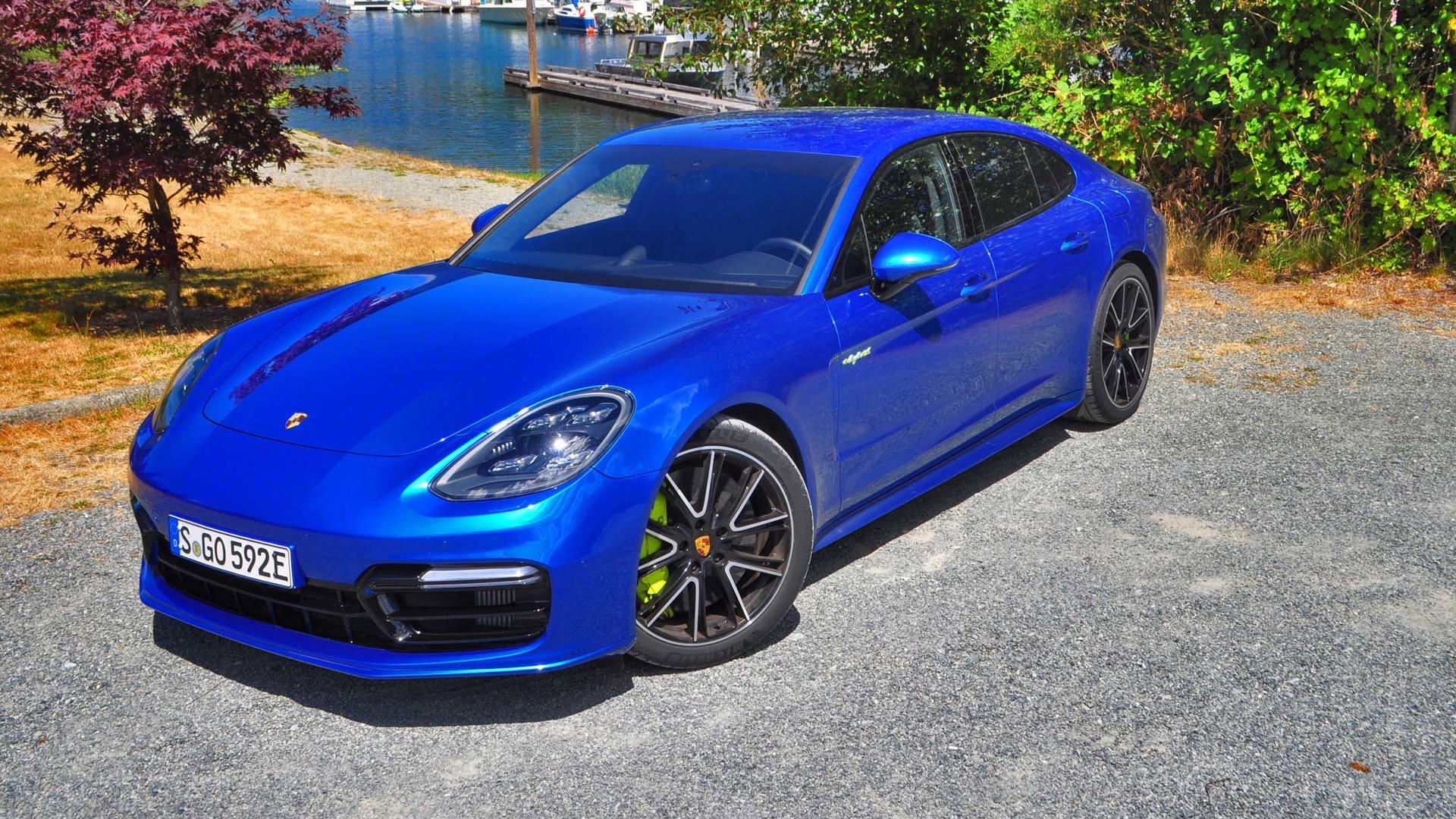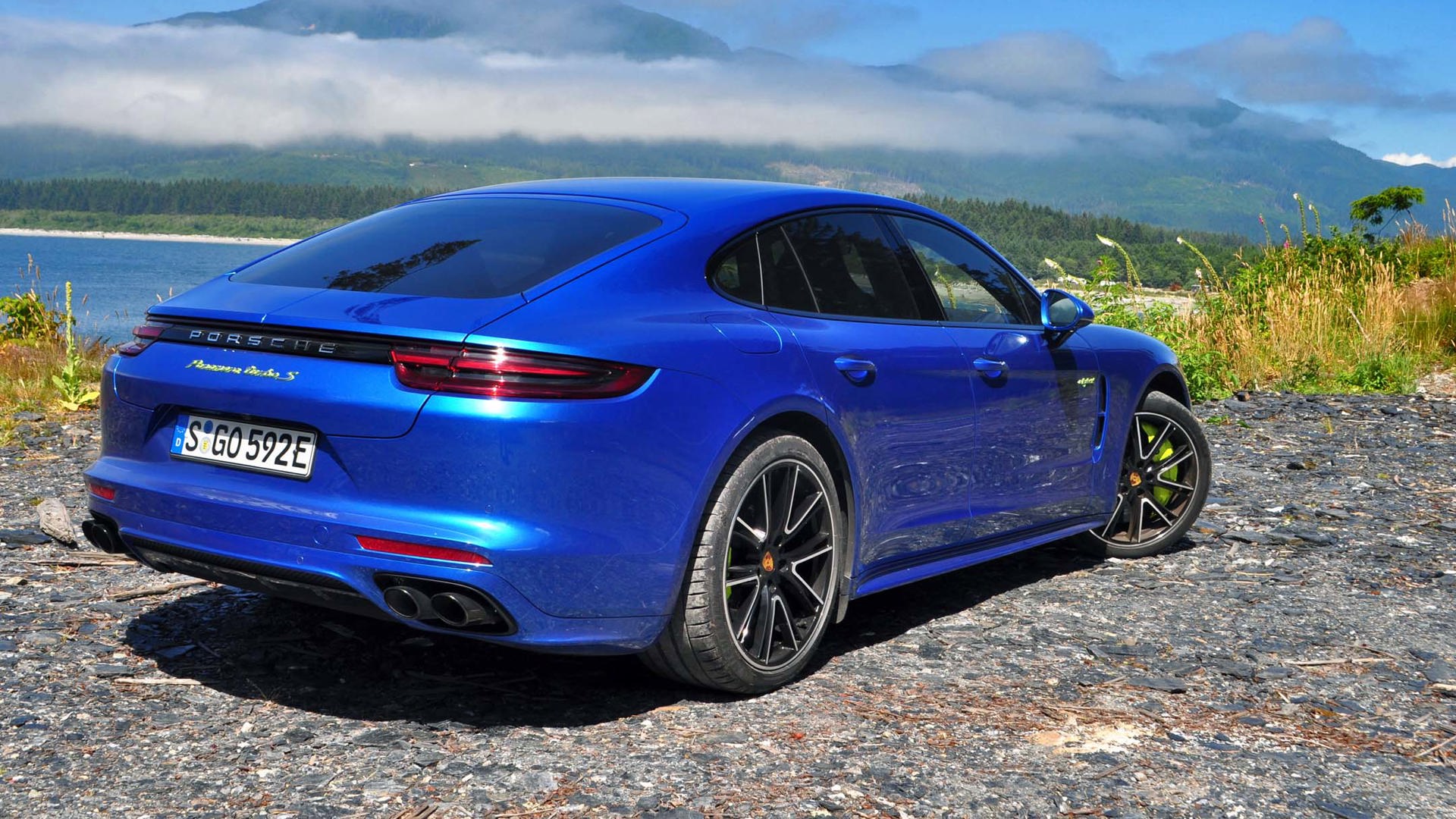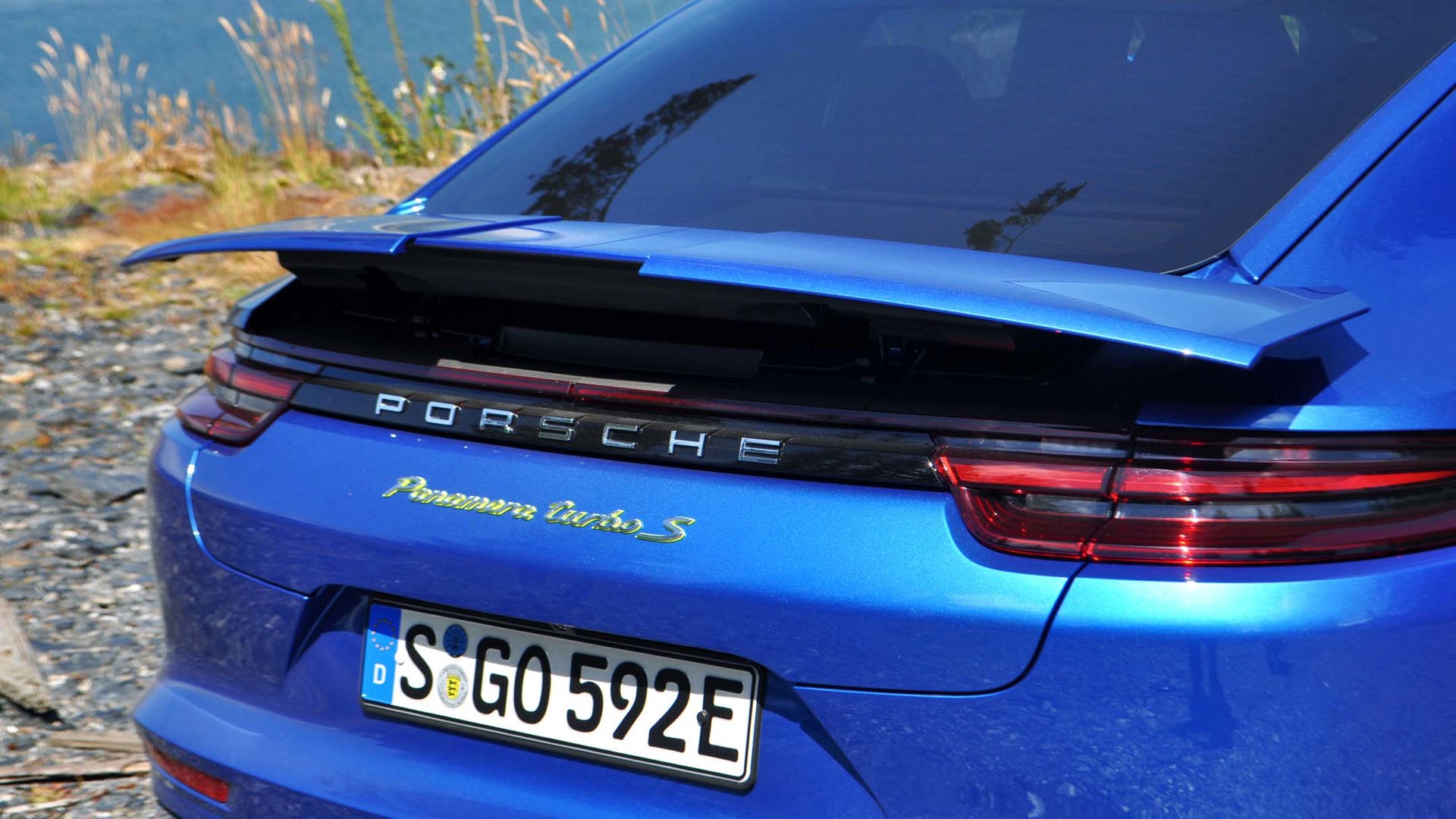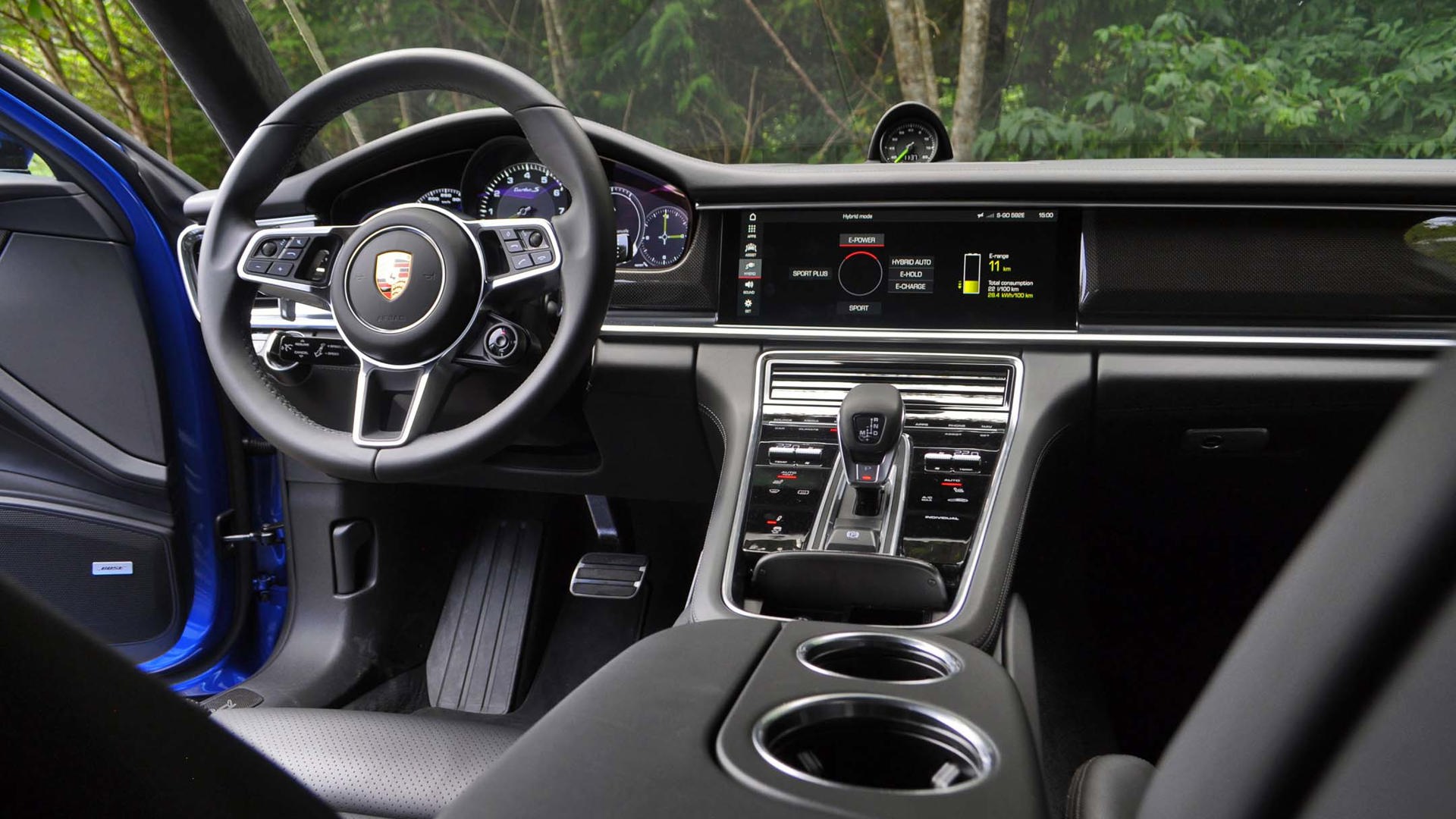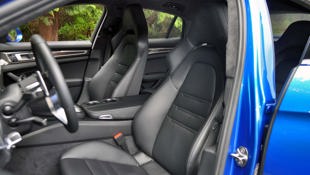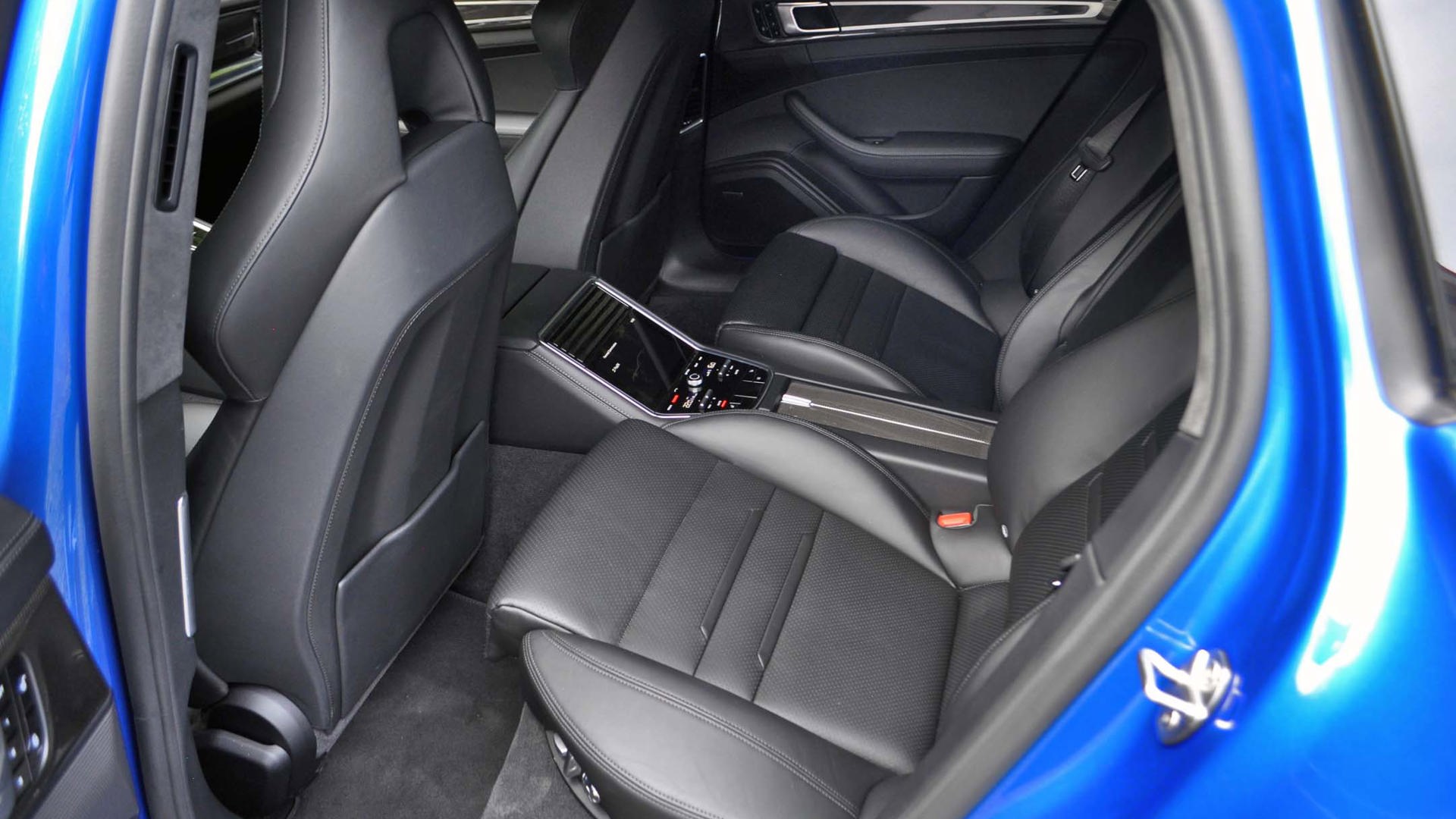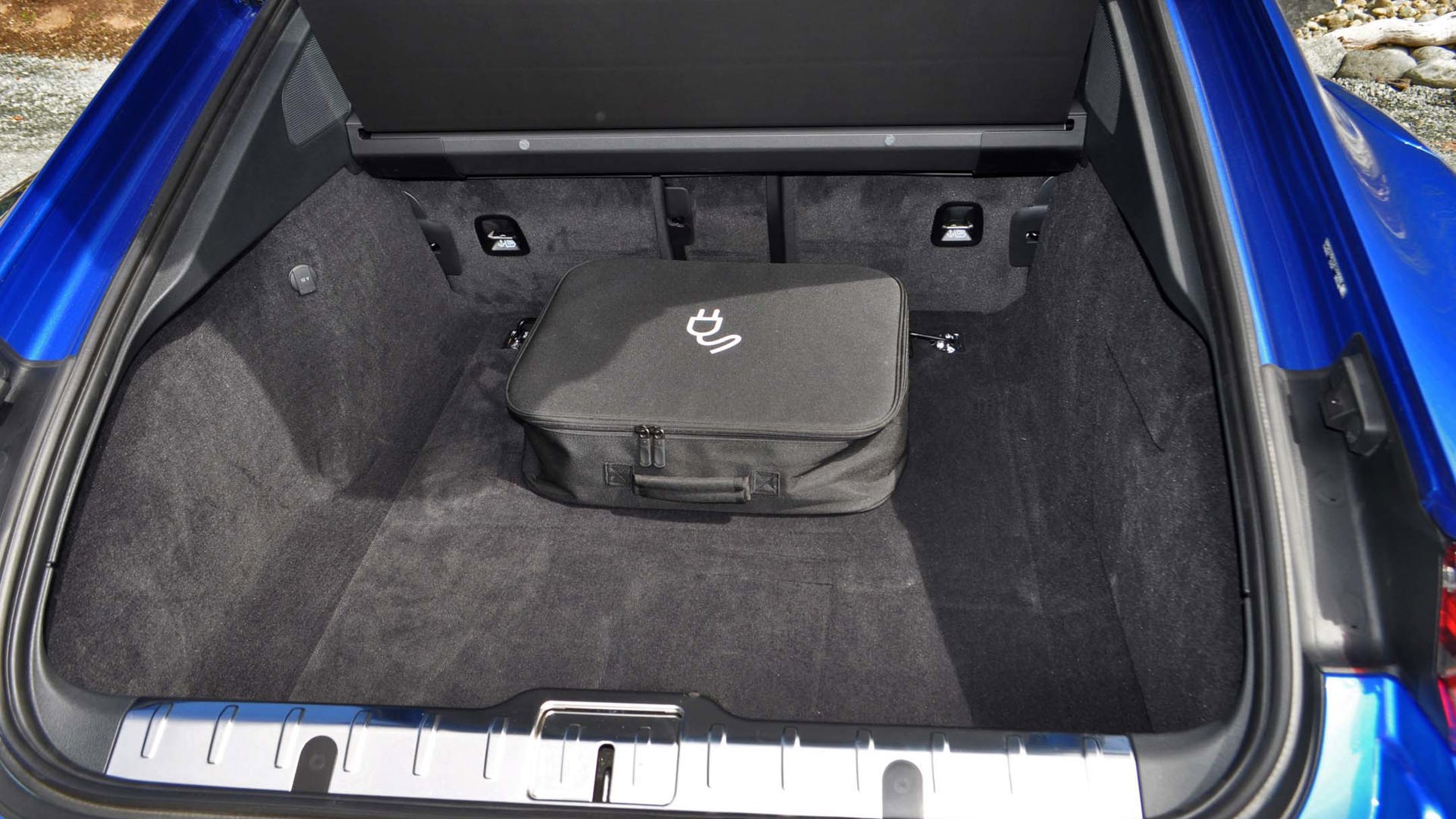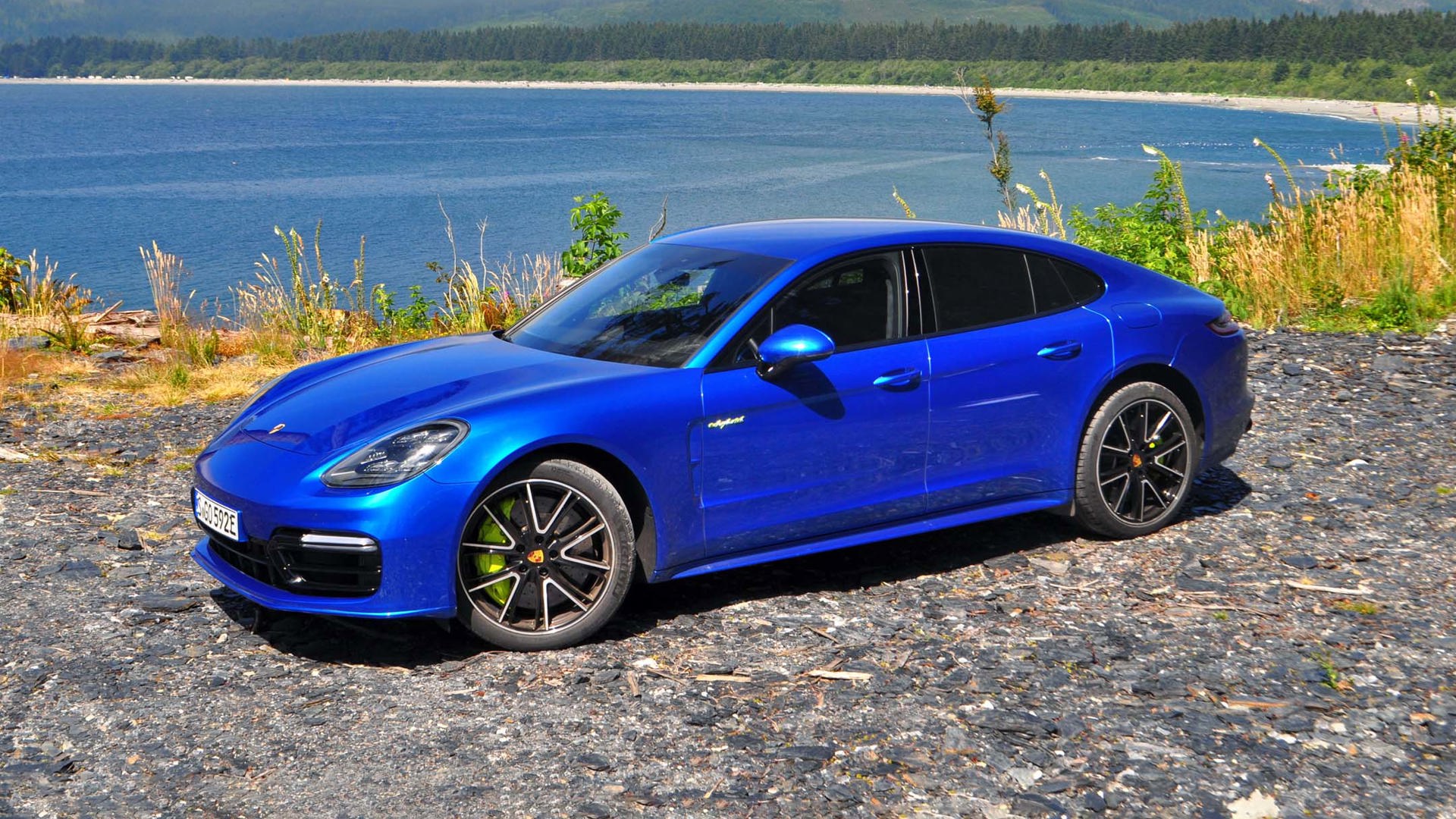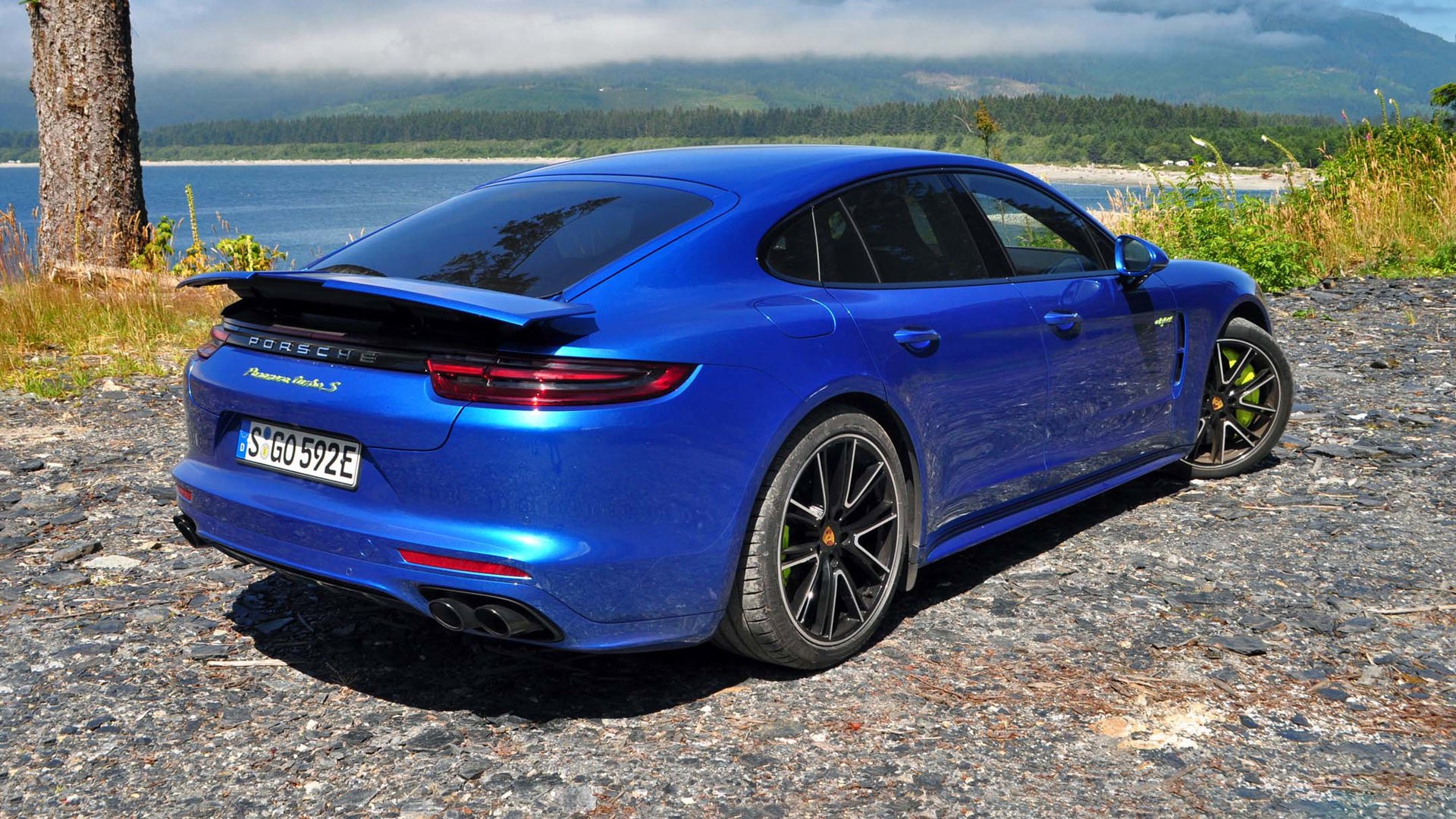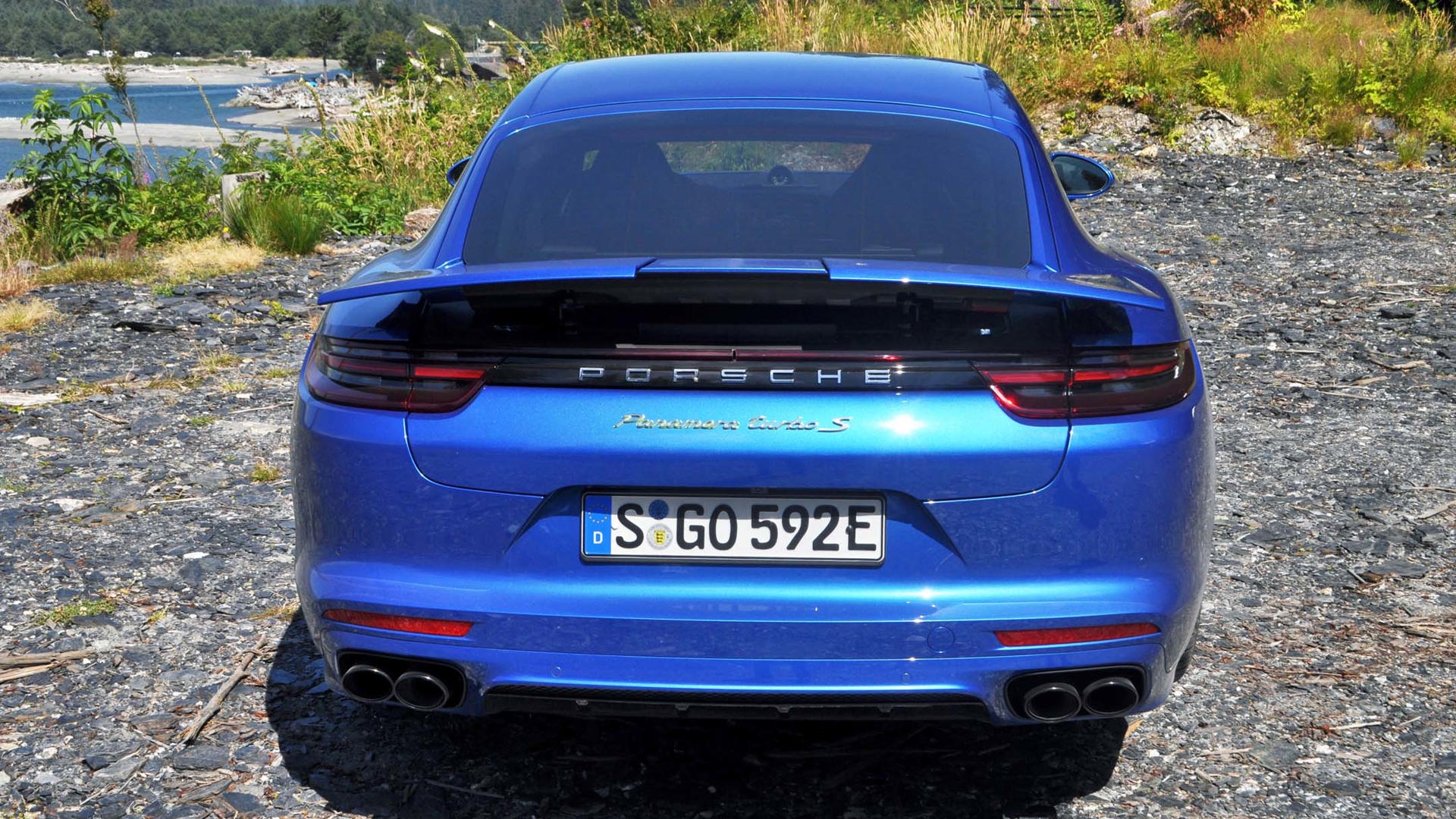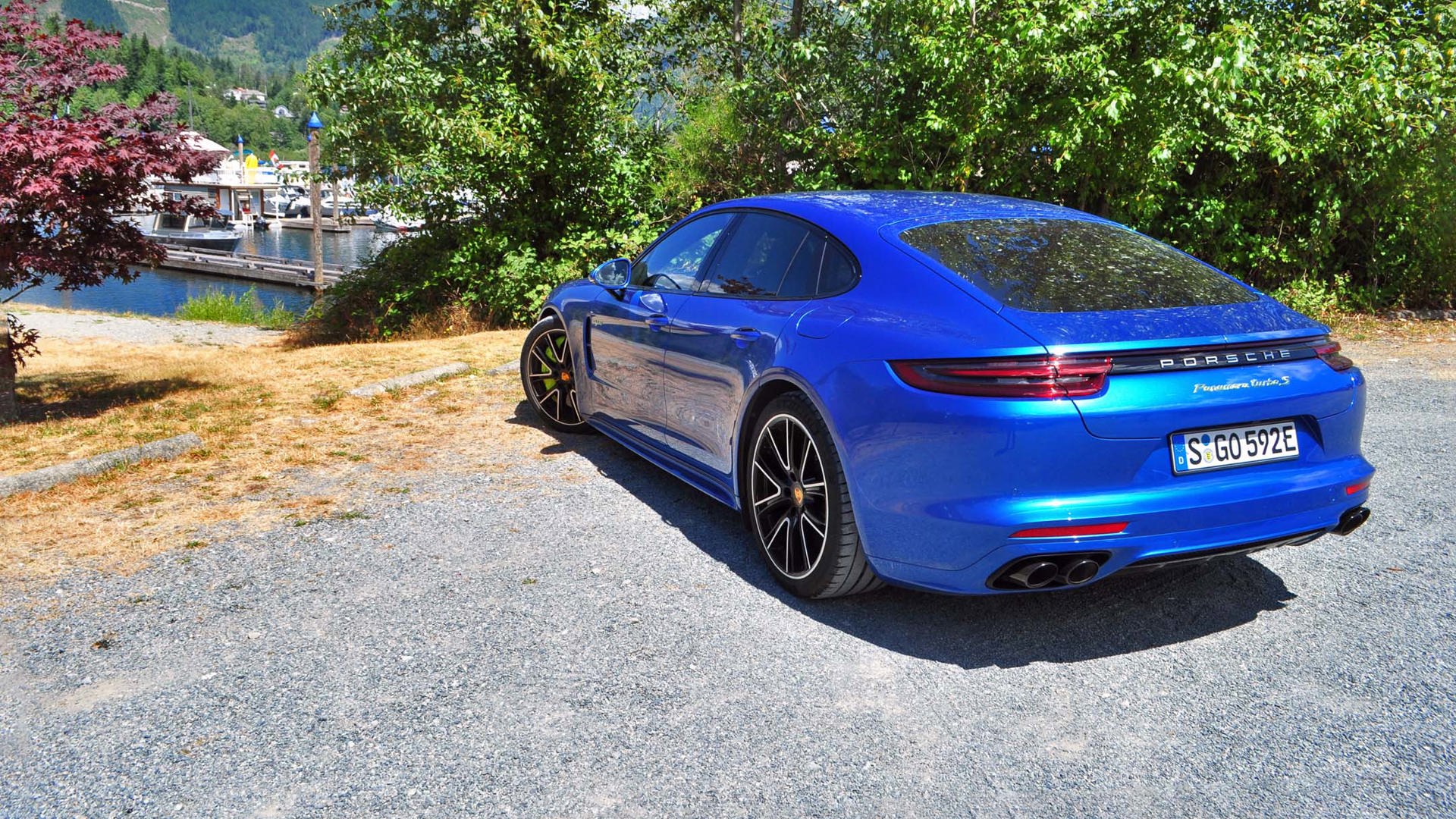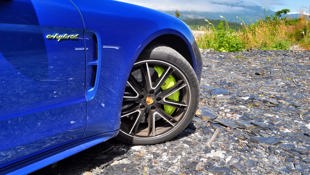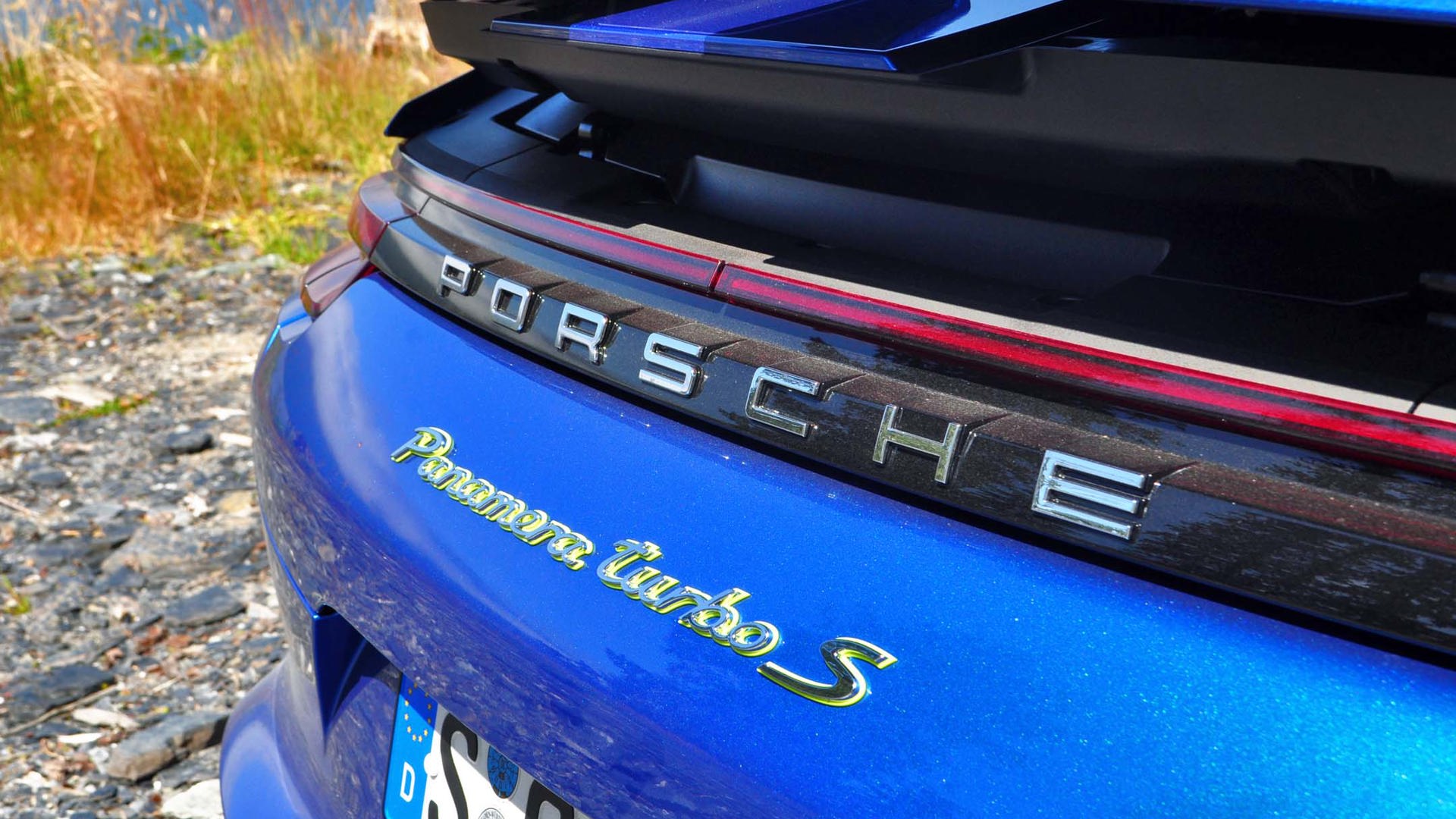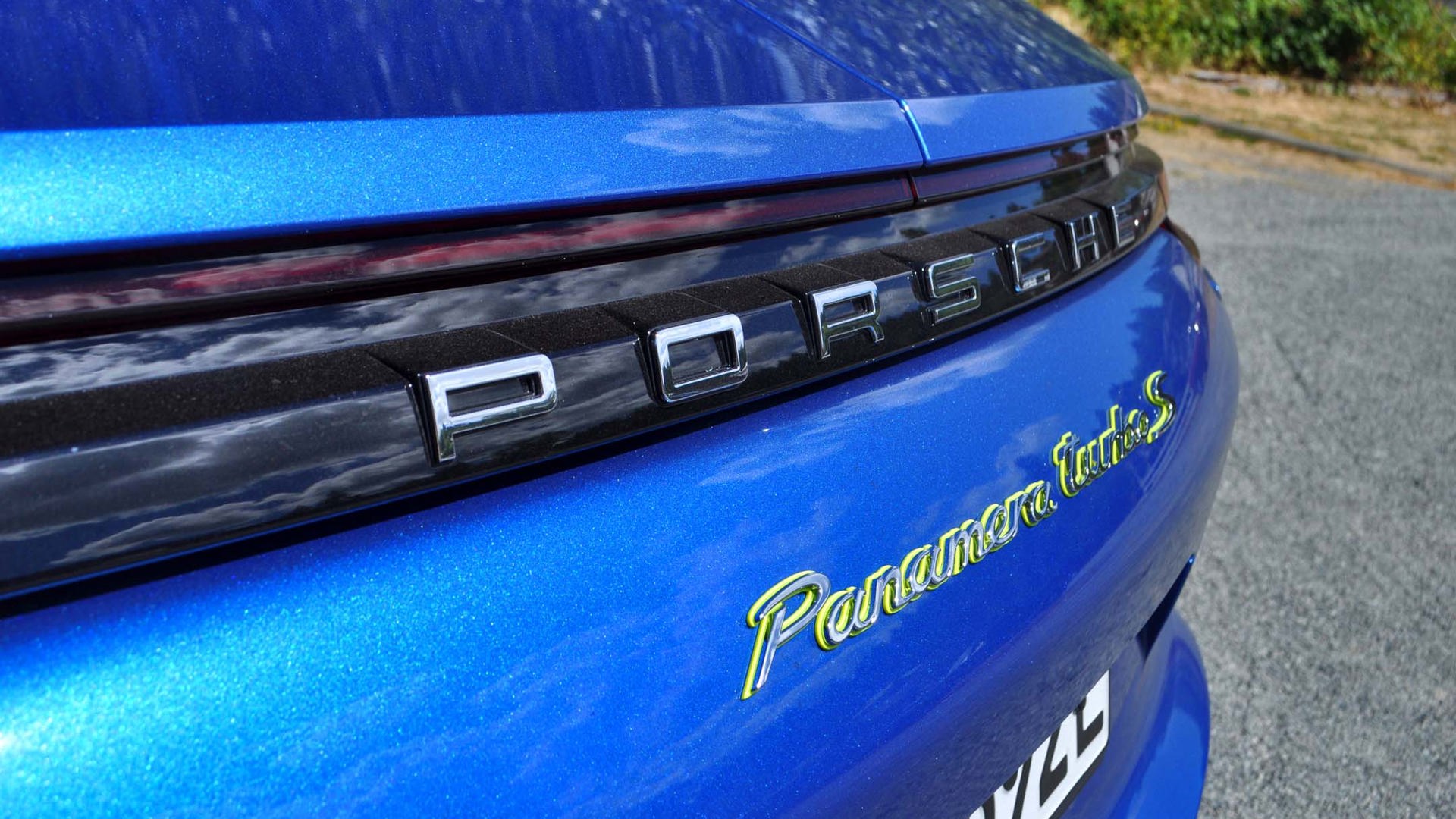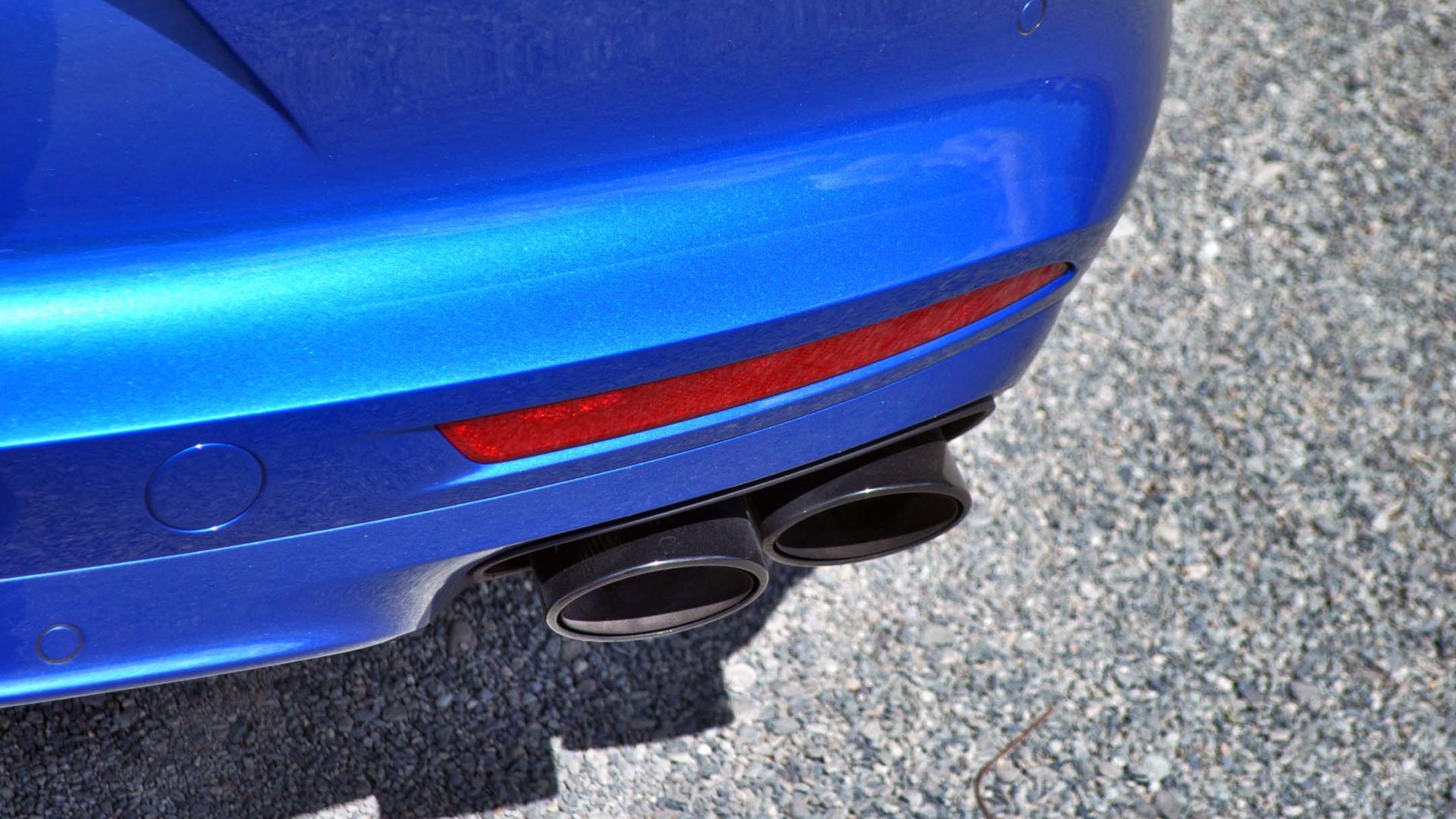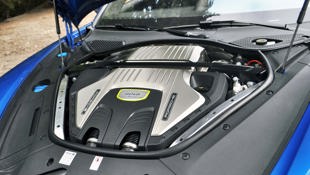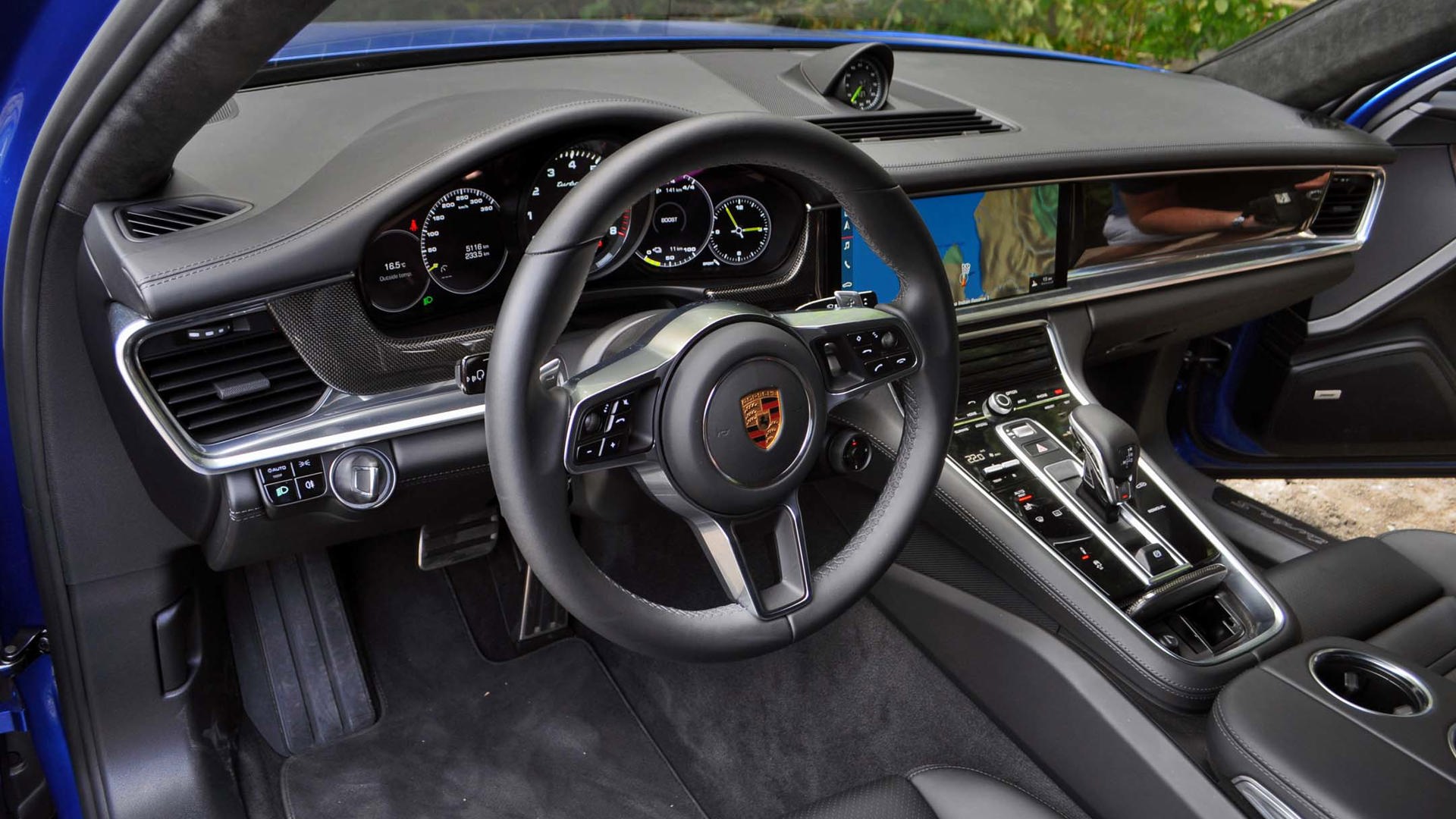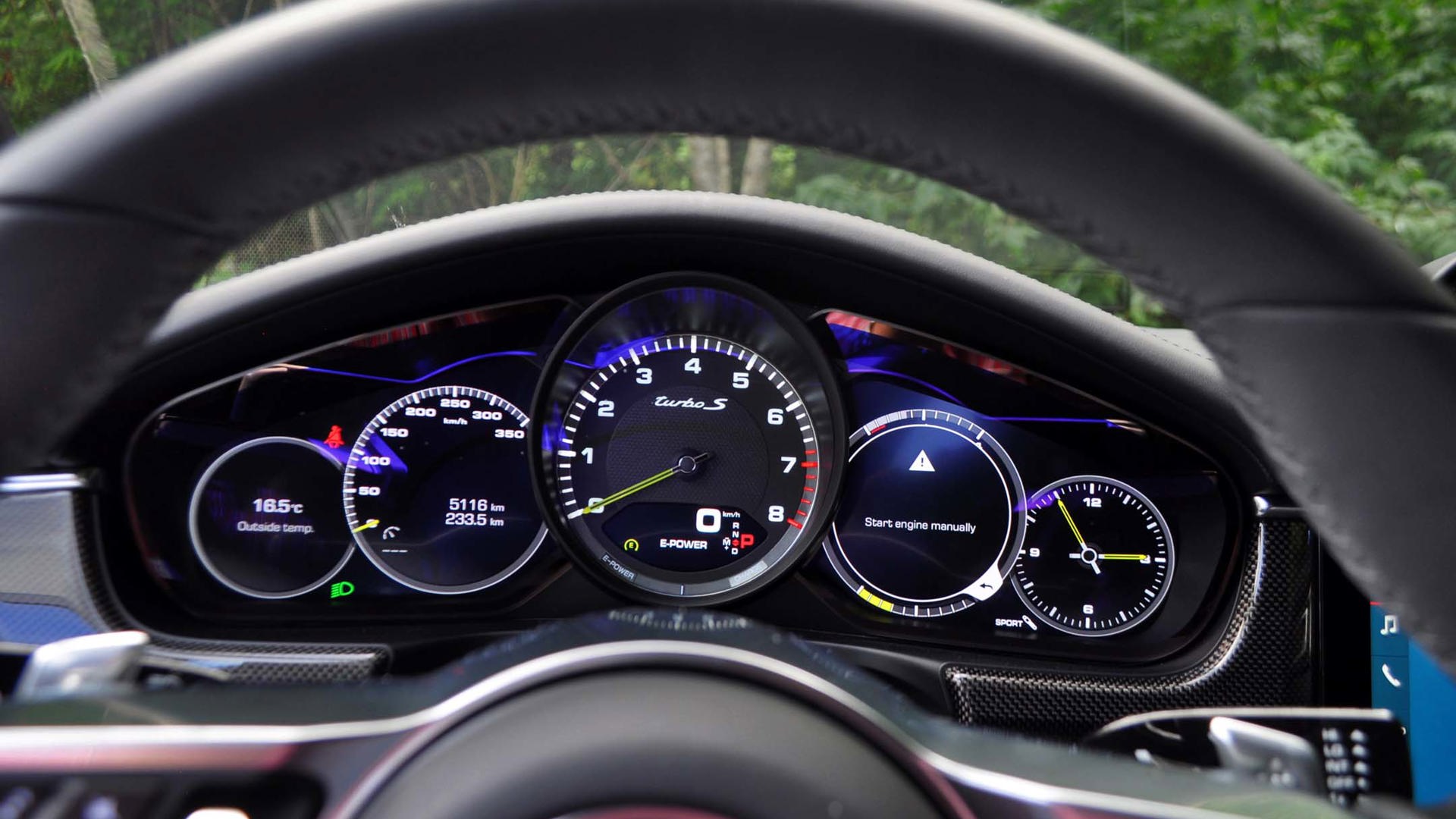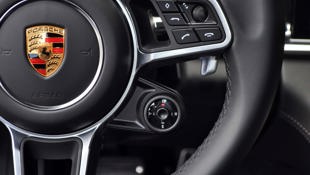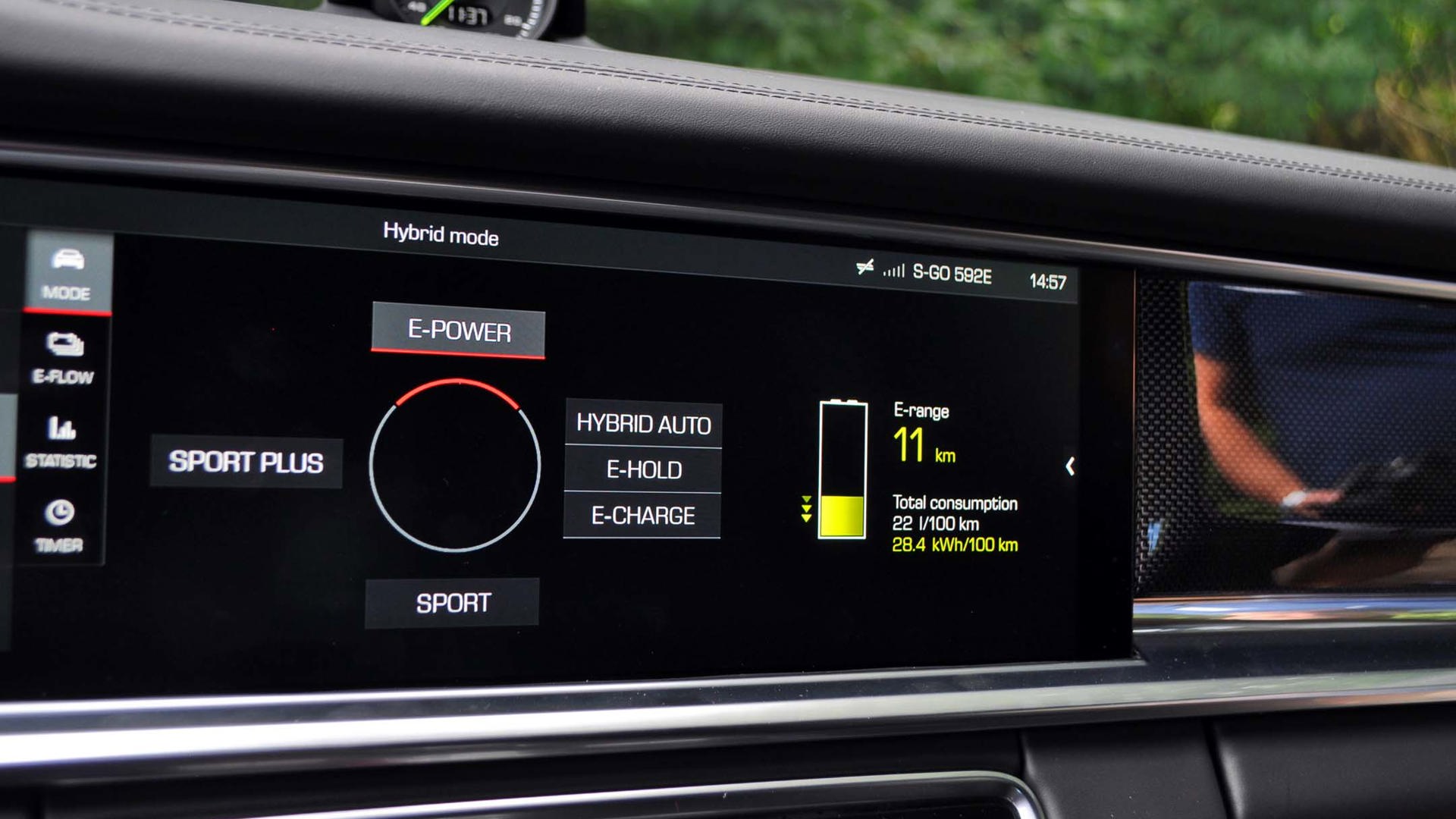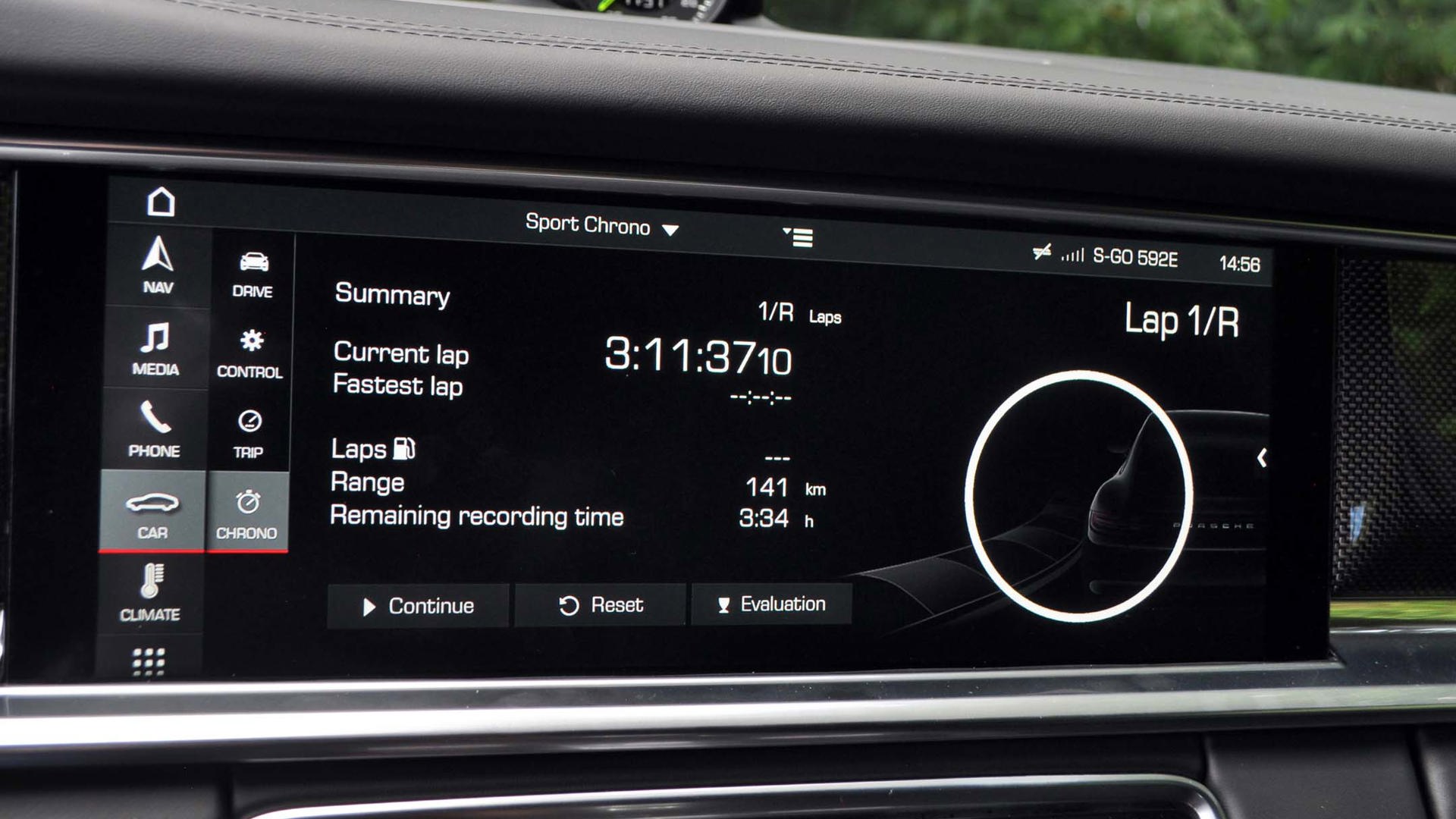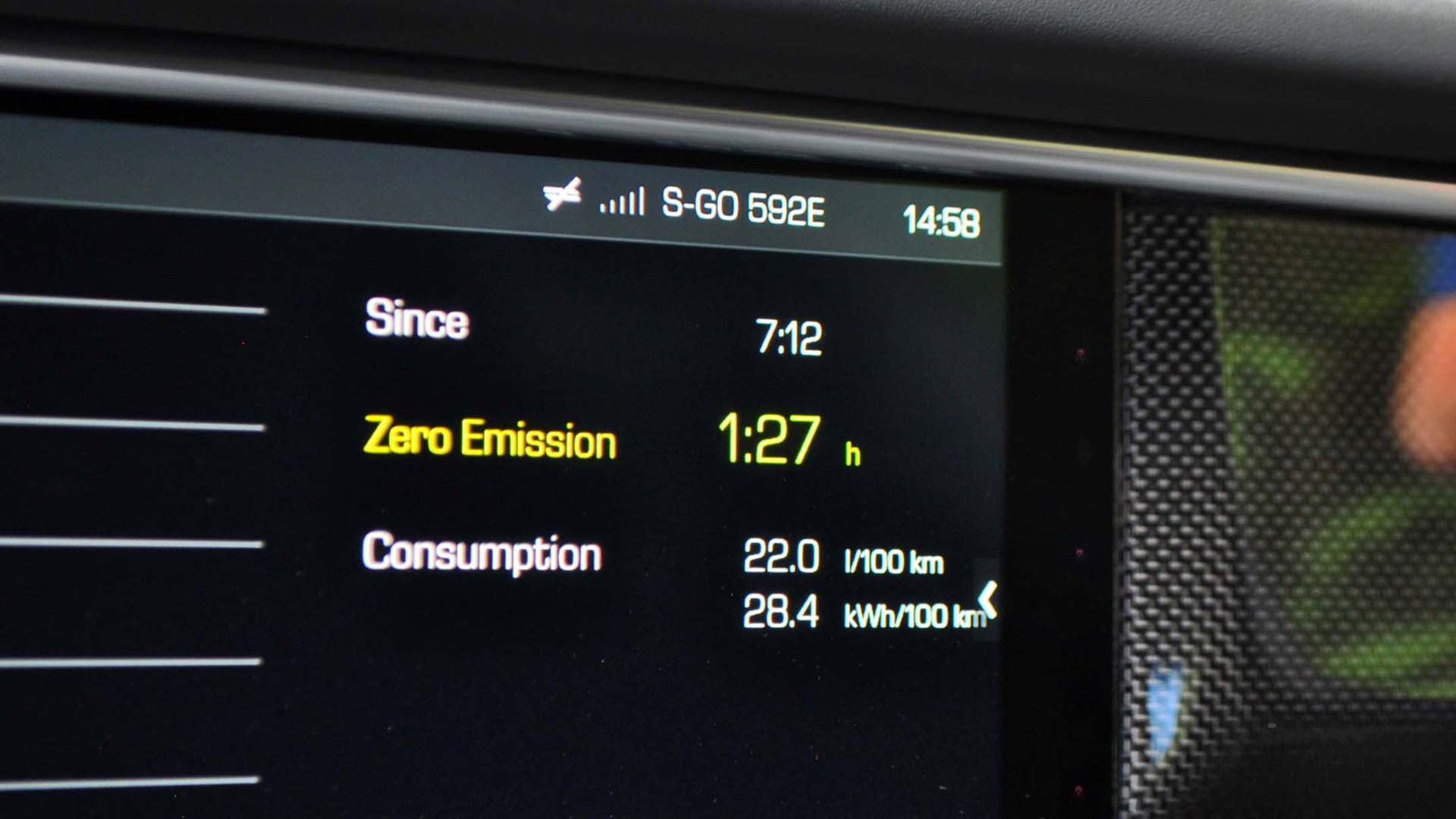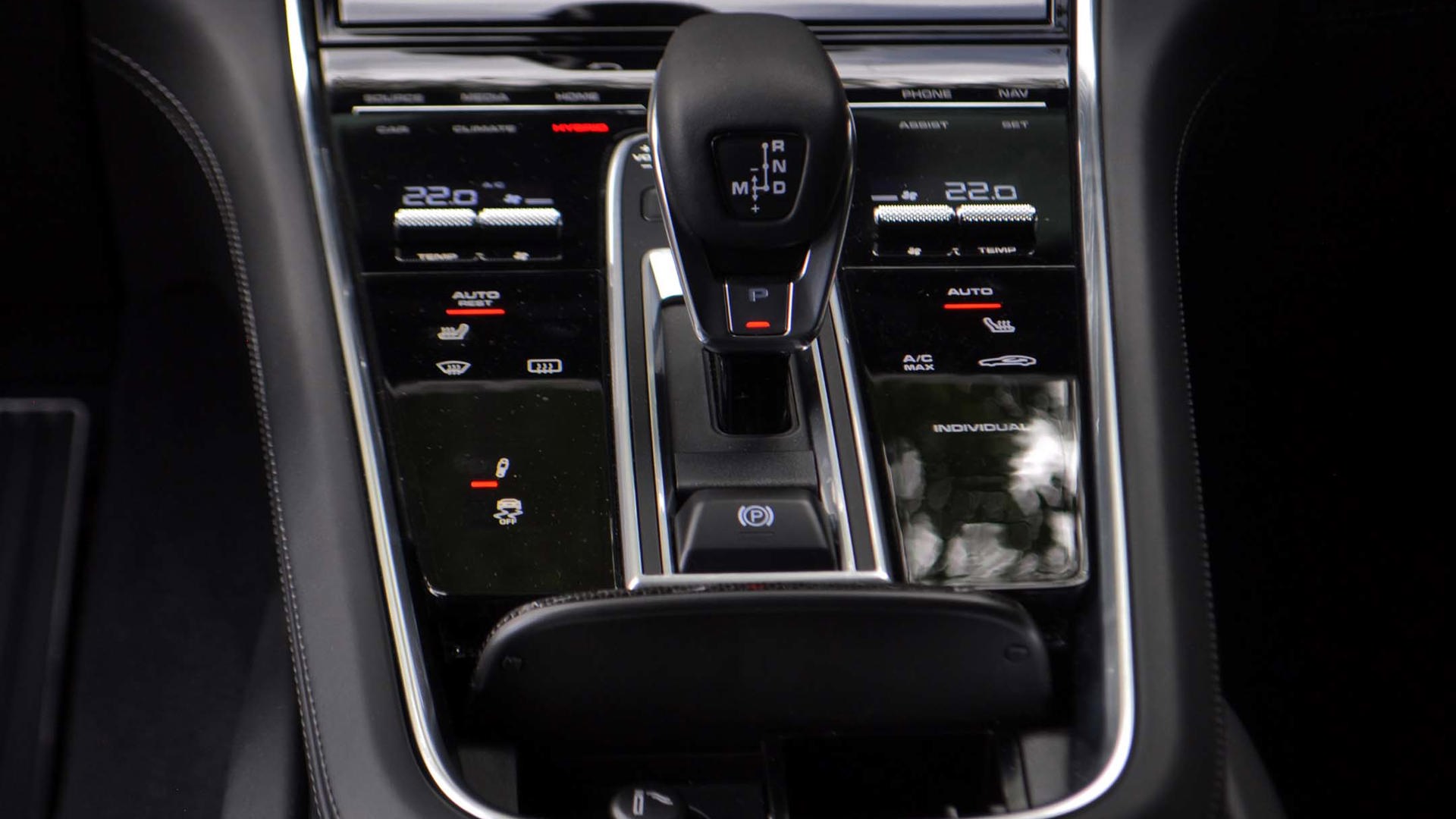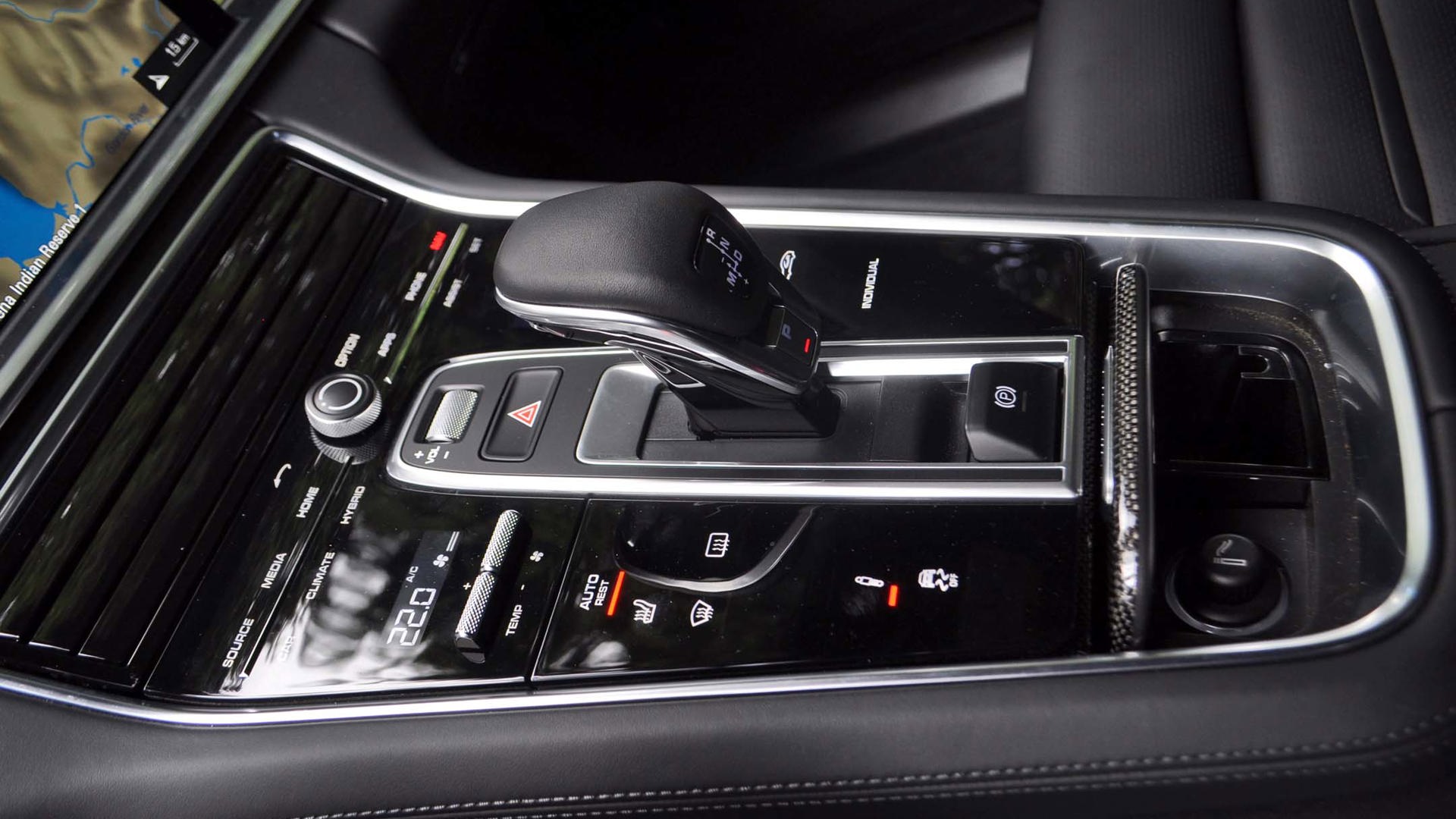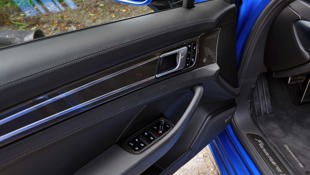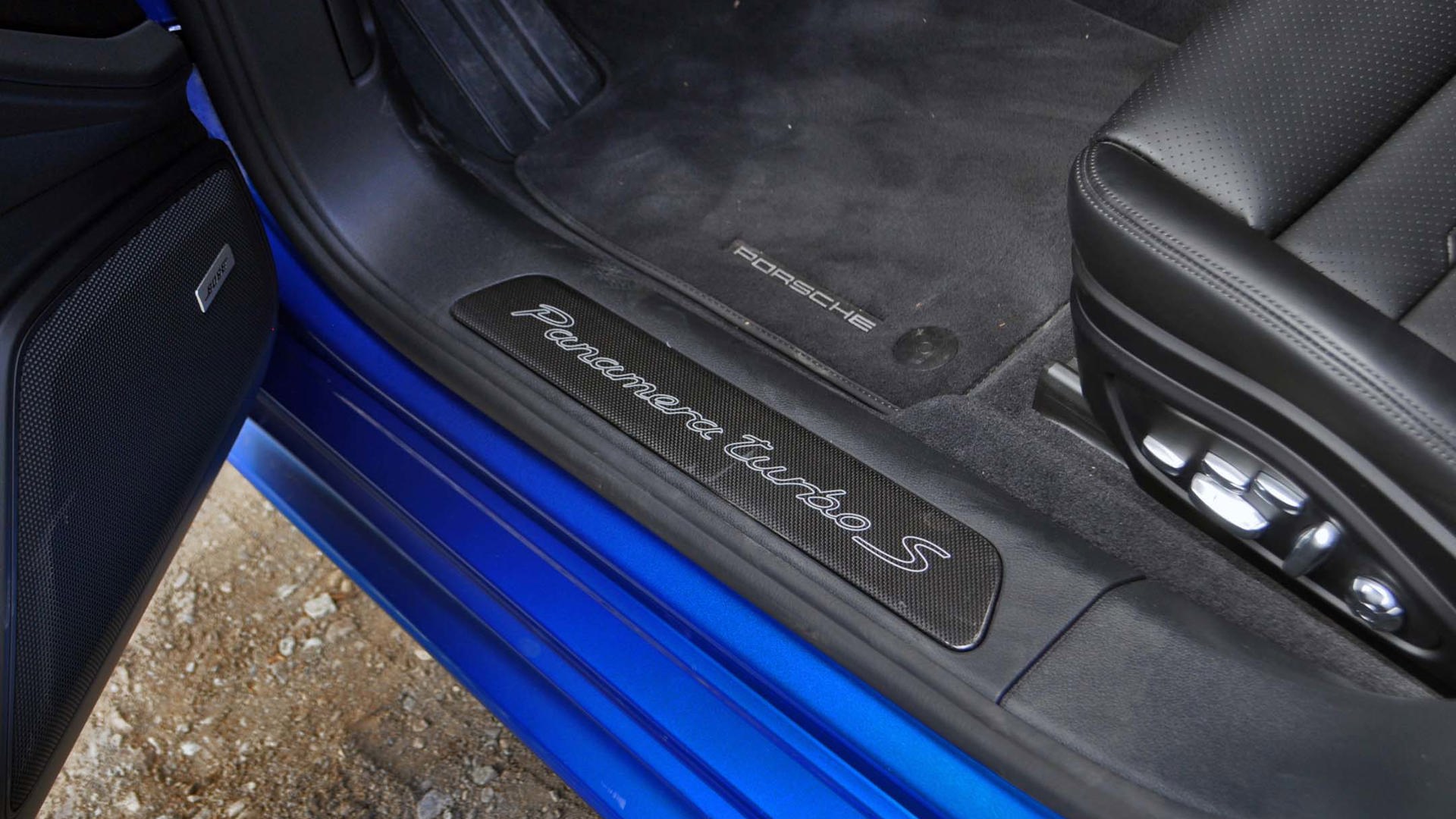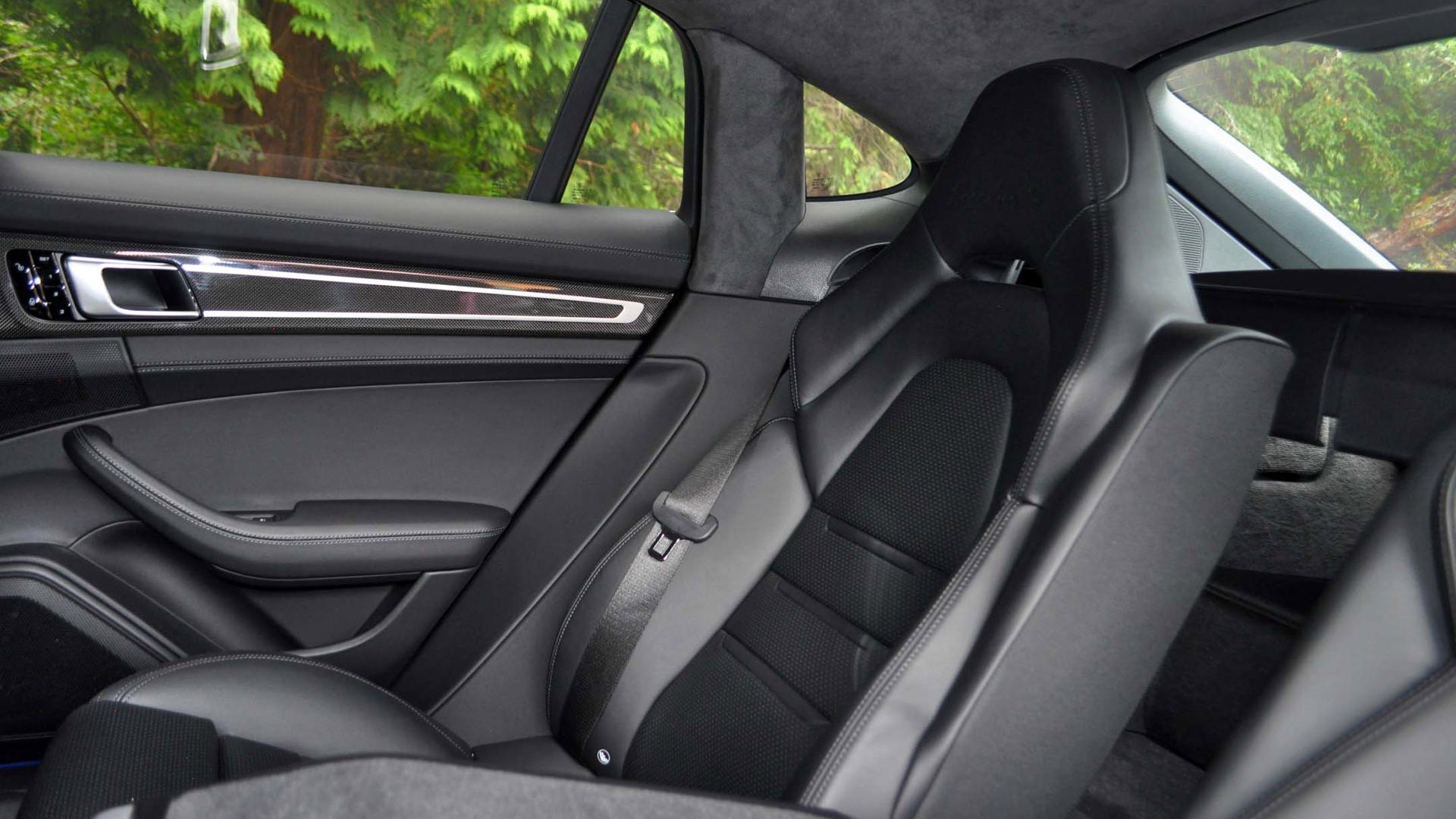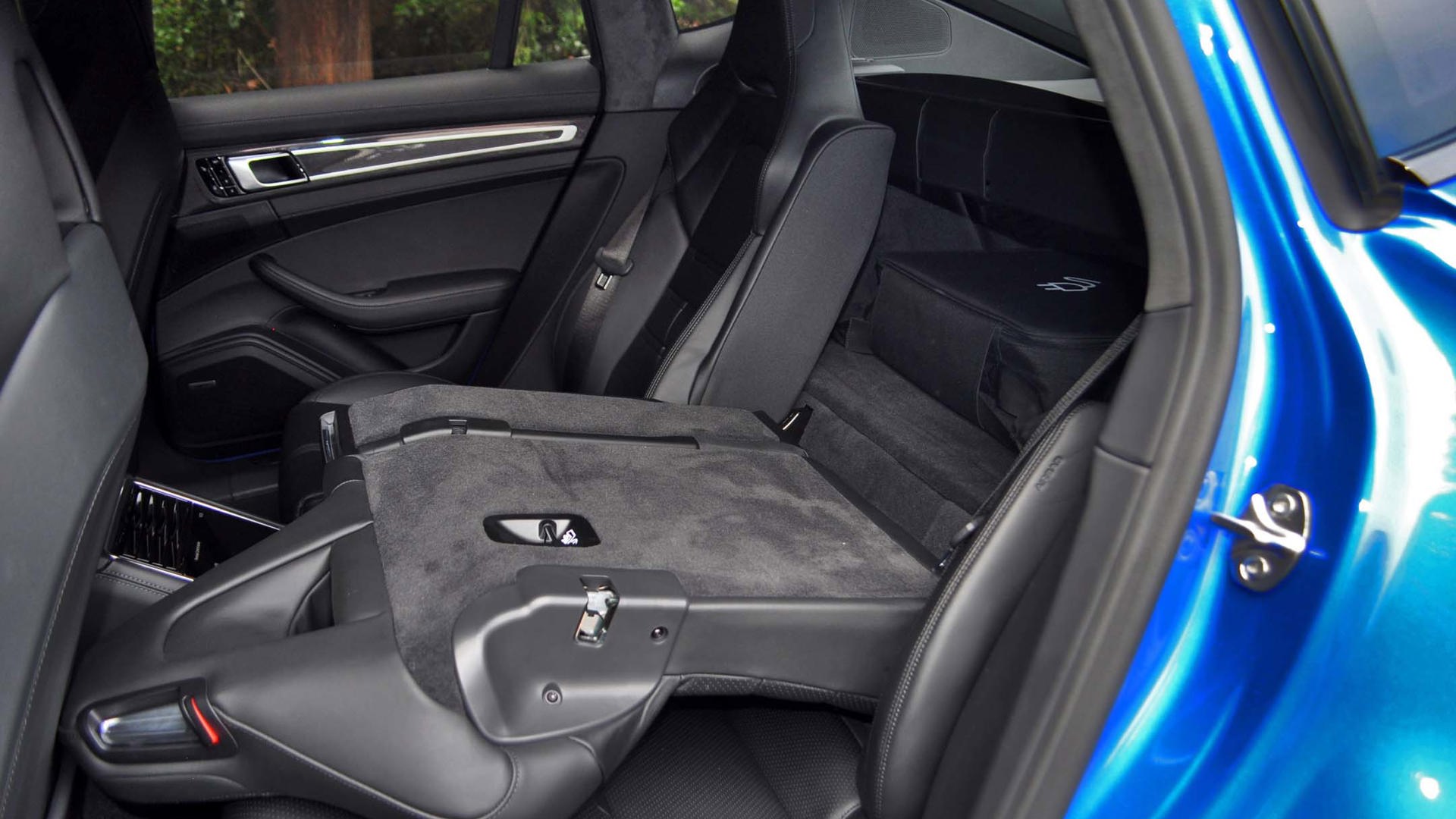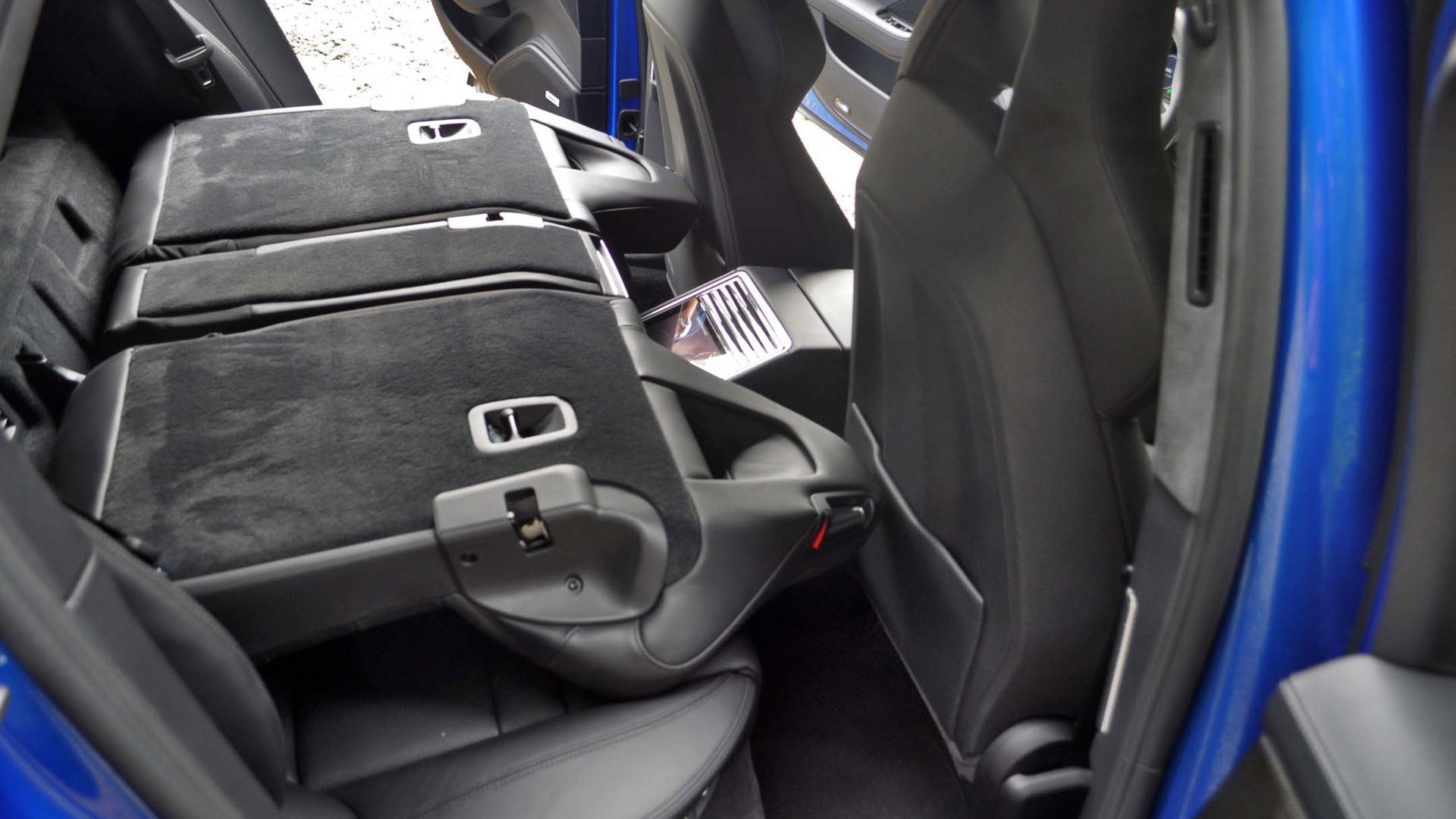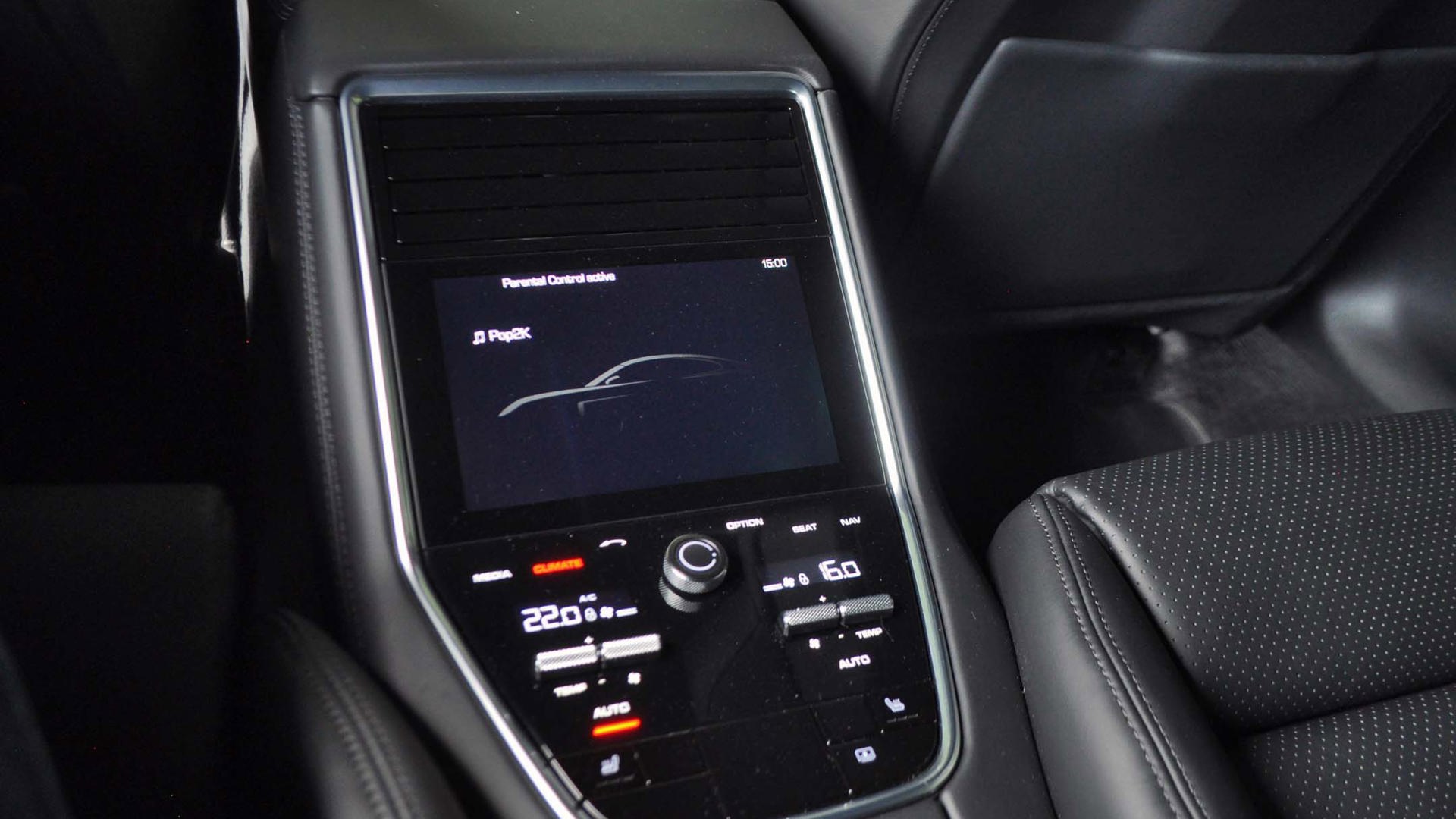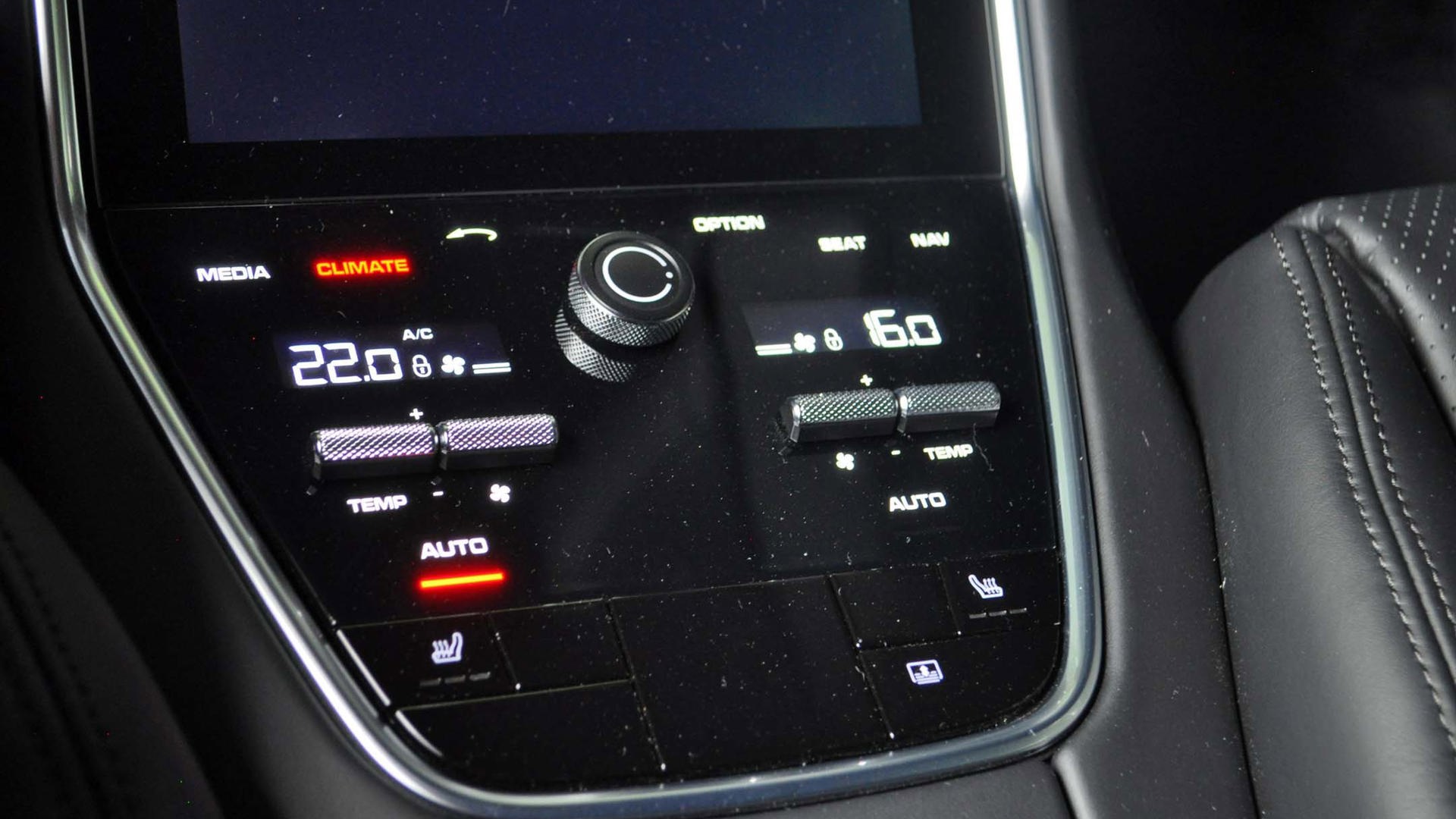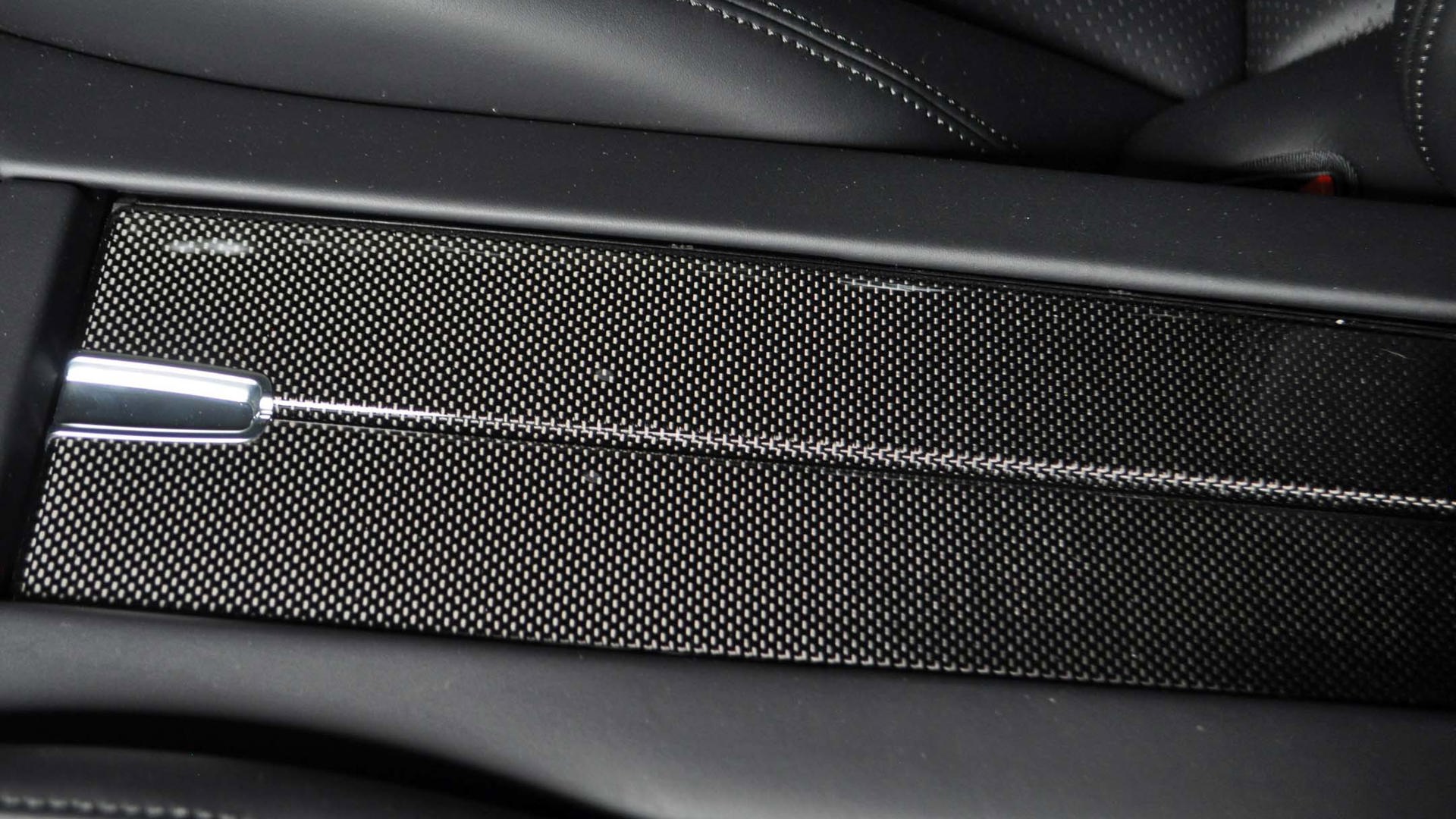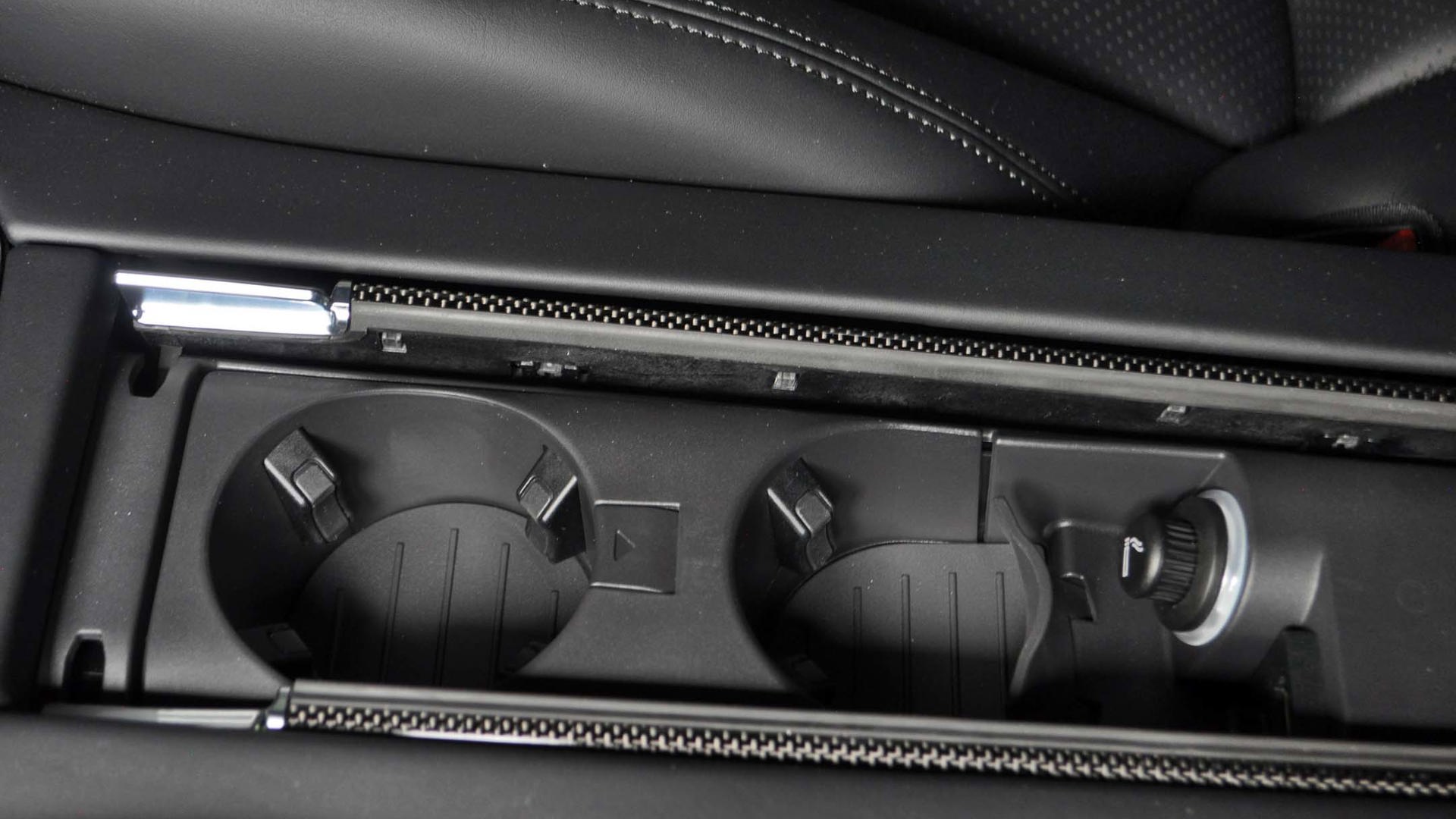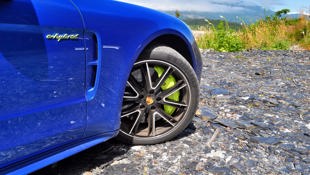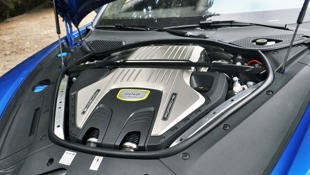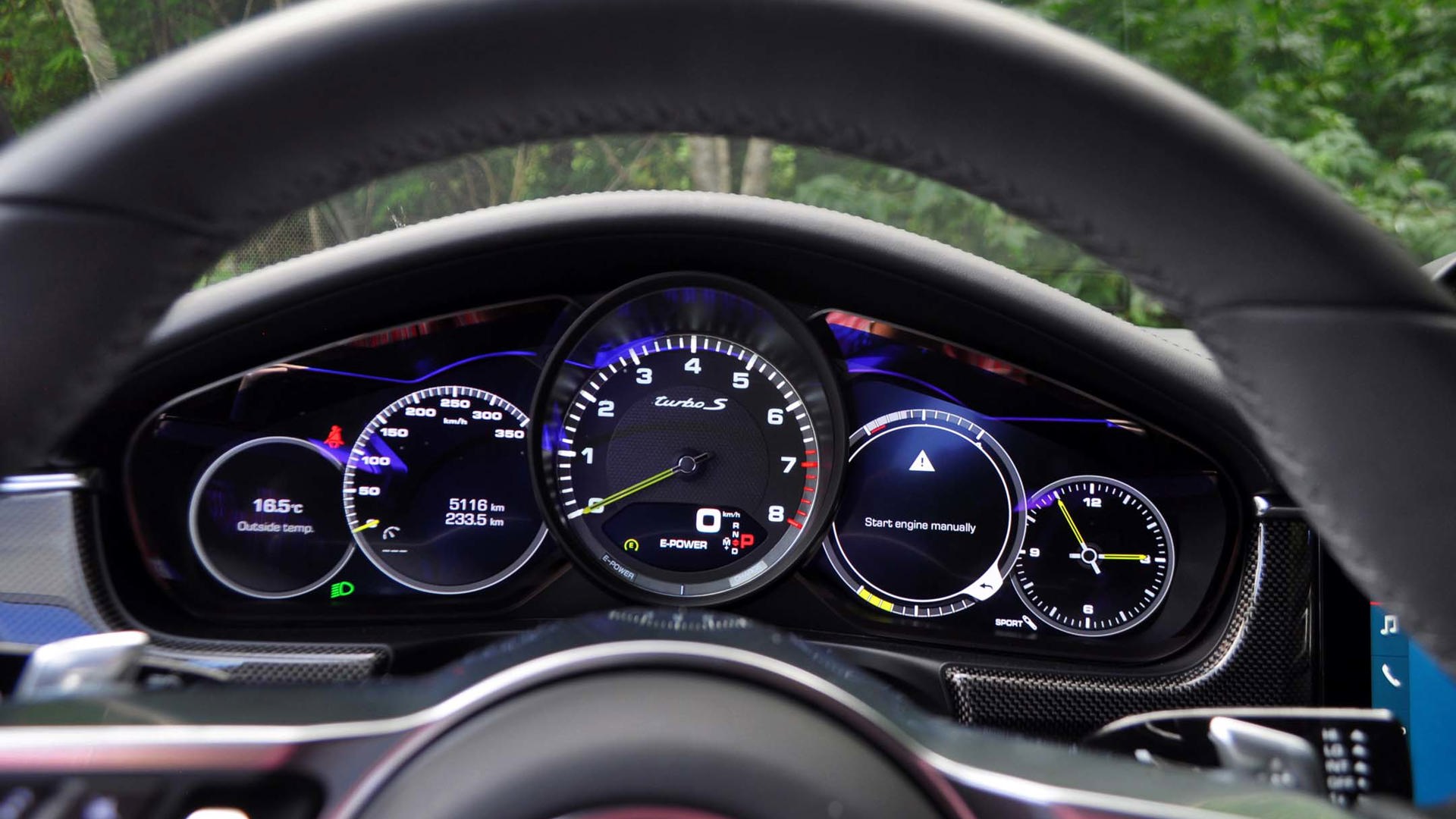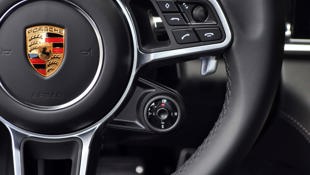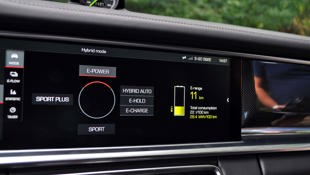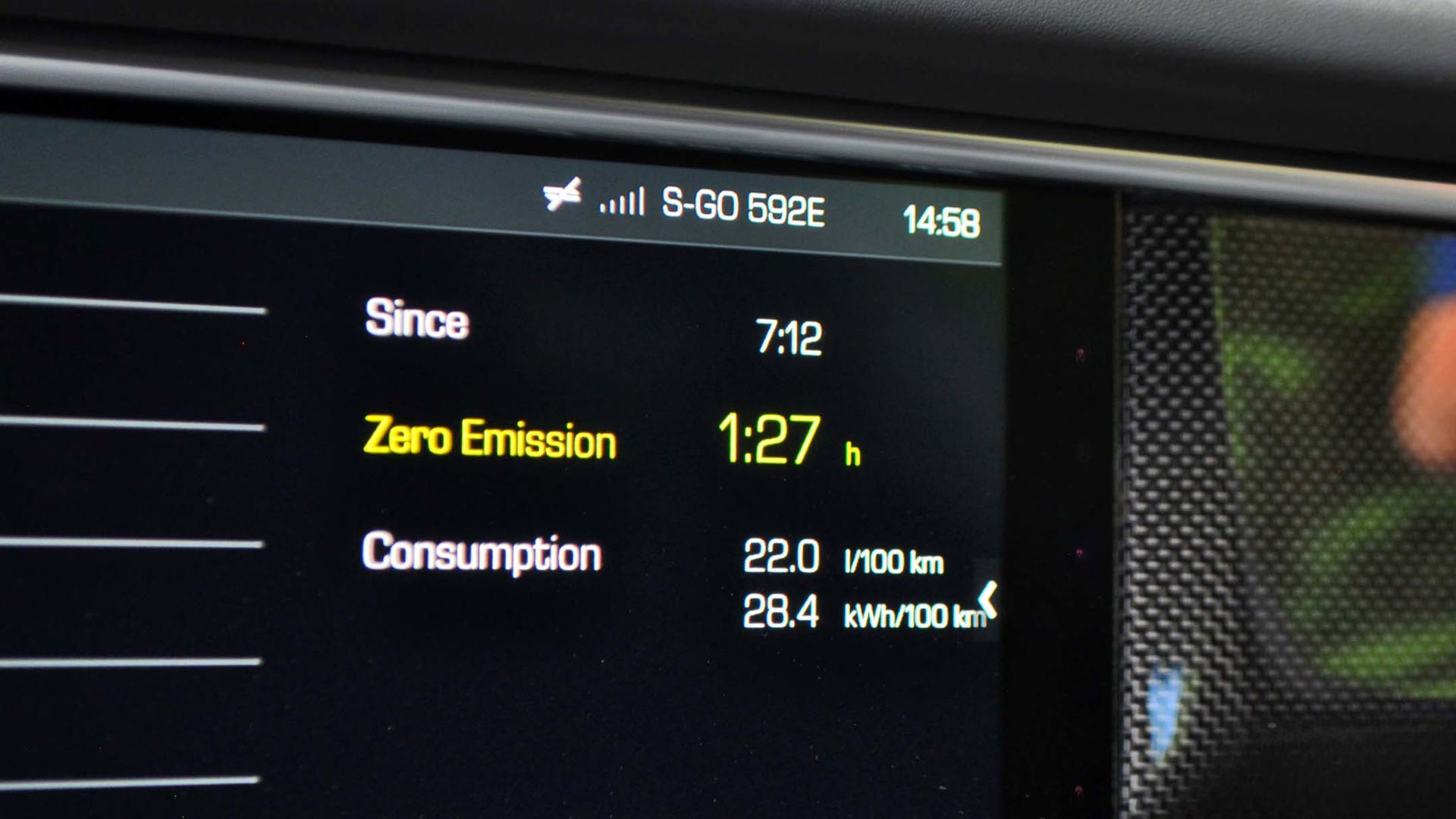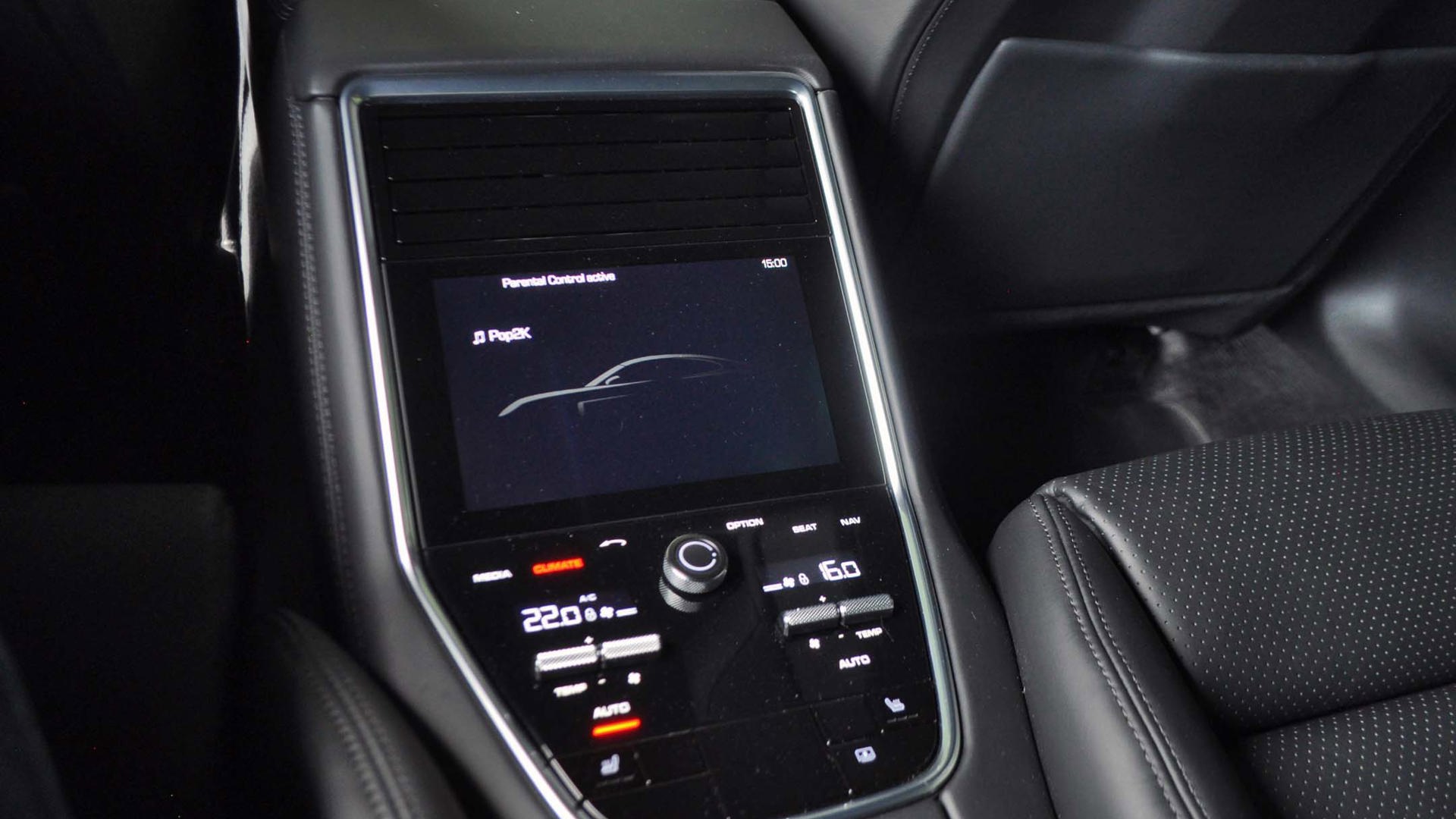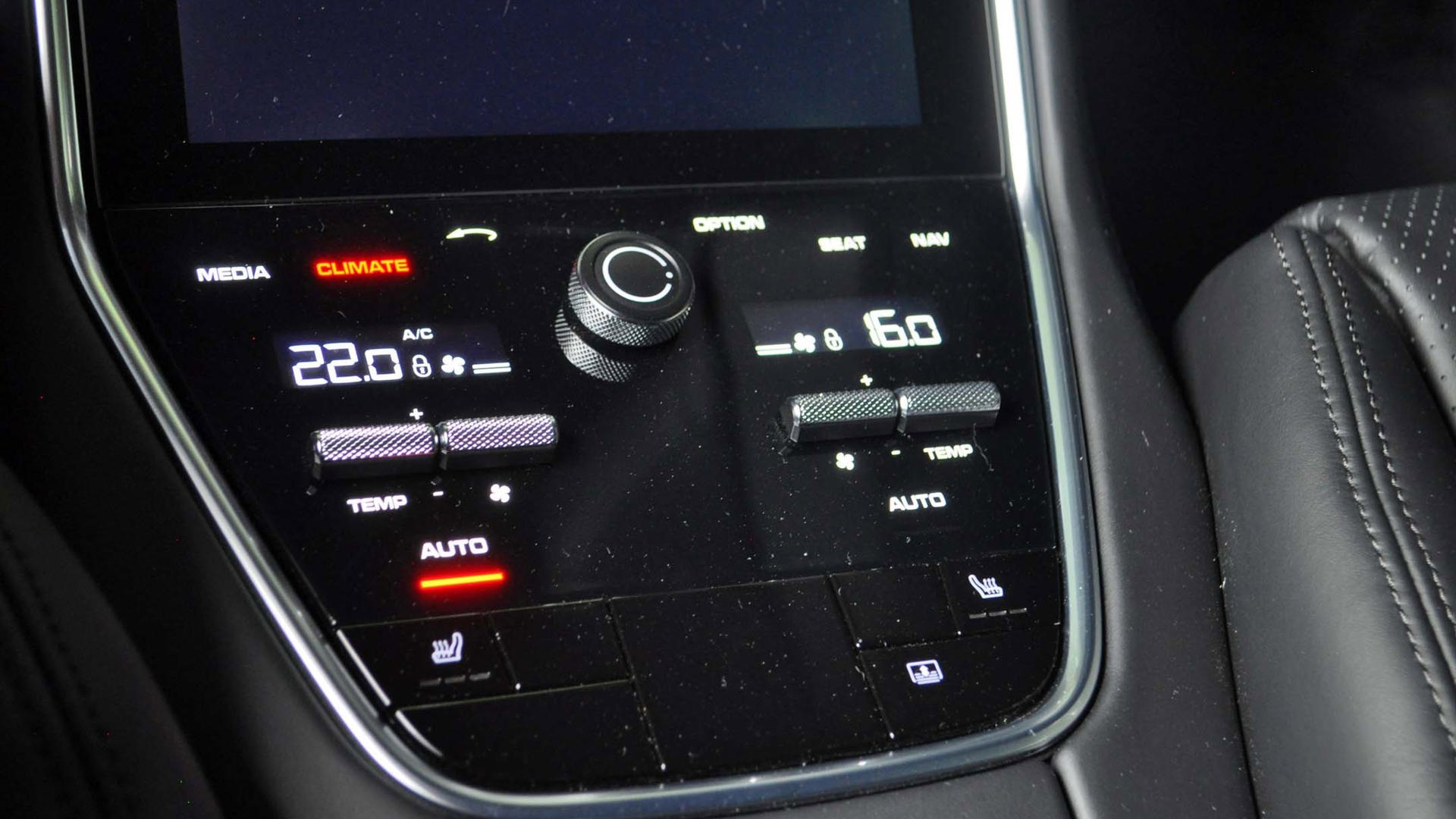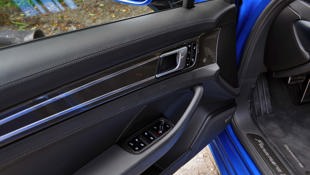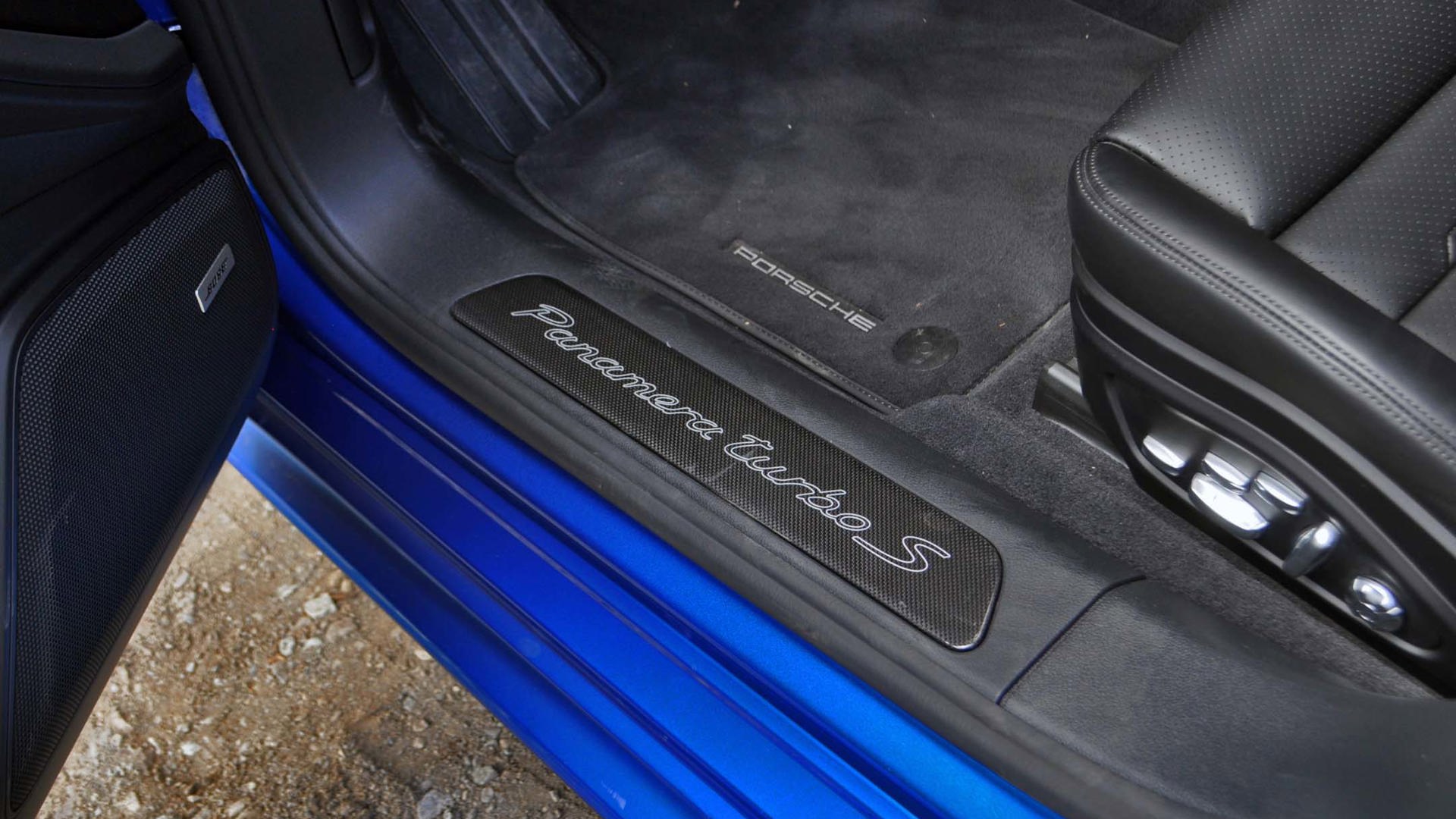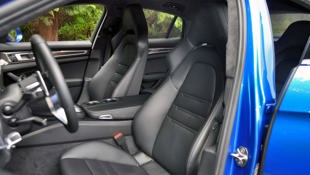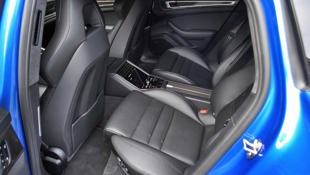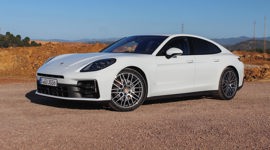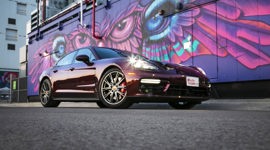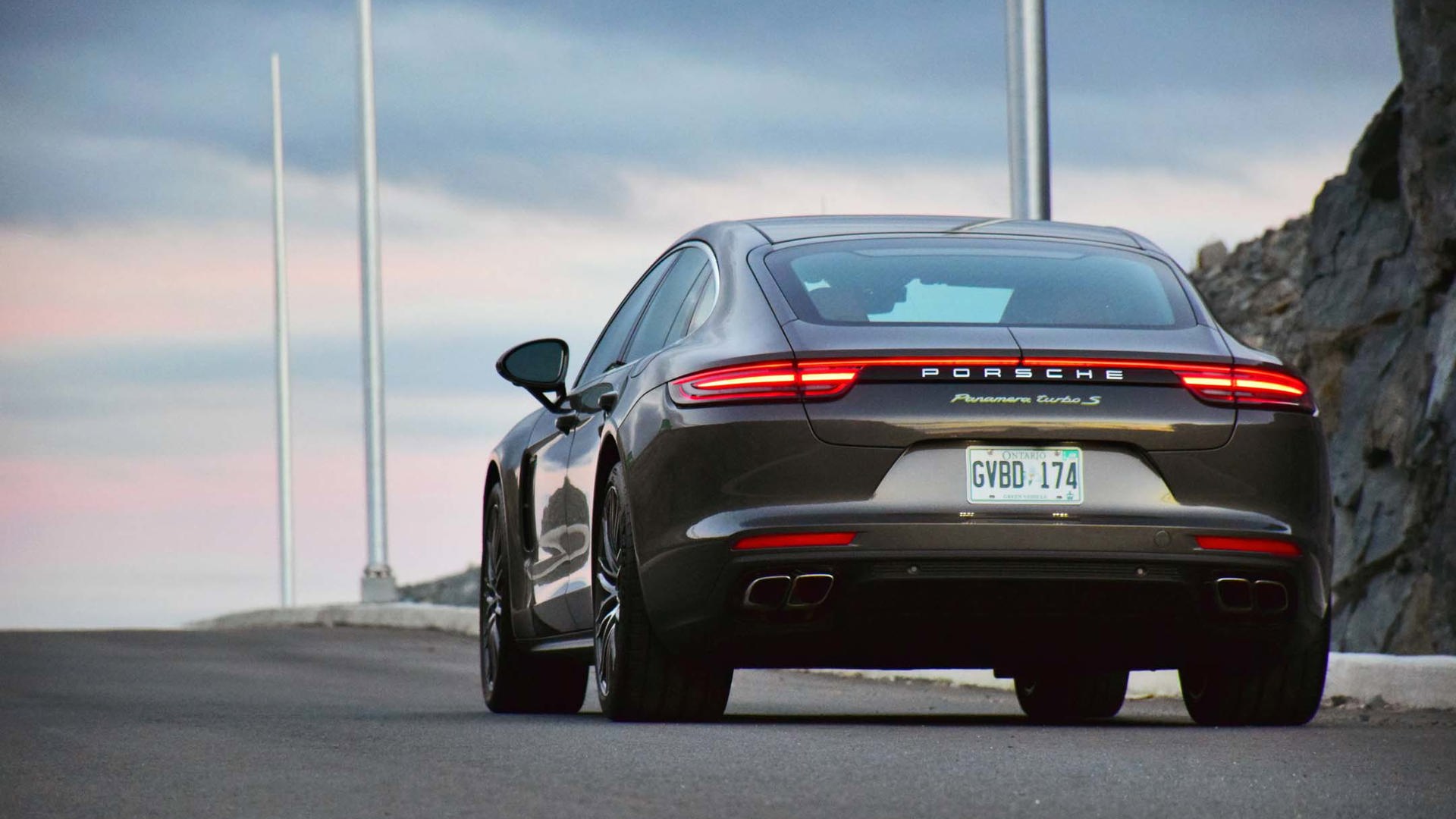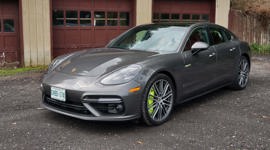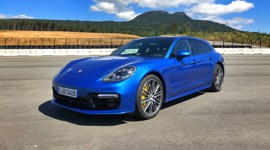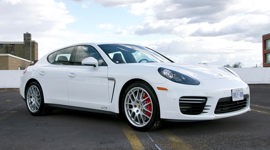DUNCAN, BC – When Porsche unveiled its 918 Hybrid hypercar, it seemed clear that the 887 hp plug-in hybrid supercar was a four-wheeled mission statement. Soon after the 918’s launch, Porsche replaced the hybrid Cayenne and Panamera models with more advanced plug-in hybrid versions, its extra-large battery and electric motor adding both power and efficiency.
The new flagship Panamera Turbo S E-Hybrid (“PATSEH”?) is the car that belatedly throws down with the top, ludicrously quick versions of the Tesla Model S.
With the launch of this 2018 Panamera Turbo S E-Hybrid, Porsche reaches another milestone on its way to what it has vowed will be its increasingly electrified future. It’s the first plug-in Porsche to become a top-of-the-line flagship model, not counting the limited production, million-dollar-plus 918 Hybrid hypercar.
For 2018, the Panamera range also becomes the first Porsche line to offer two different plug-in hybrid powertrains, with the mightiest Panamera now coming in with 680 rampaging horsepower, while other new Panamera E-Hybrid models – which include the Sport Turismo wagon, Panamera 4 sedan, and the slightly stretched Panamera 4 Executive – offer a less monstrous yet still impressive 462 hp.
The new flagship Panamera Turbo S E-Hybrid (“PATSEH”?) is the car that belatedly throws down with the top, ludicrously quick versions of the Tesla Model S. Verdict spoiler alert: while the all-electric Tesla still thunderchecks drivers and passengers alike into their seats more violently than the Porsche when accelerating from a full stop, the Porsche’s various Sport and Sport+ handling modes bring a level of dynamic performance in corners and under braking that the floaty Model S and its low-rolling resistance tires can’t touch.
The lowdown: starts with more than a monster engine
Porsche calls it the fastest hybrid sedan in the world, and indeed, it’s easier to argue with the “sedan” part than the “fastest hybrid” part. Its 4.0L turbocharged V8 – the same one as the previous range-topping 550 hp Turbo – is now electrically boosted by a 136 hp electric motor, for a combined quoted power output of a supercar-baiting 680 hp and 626 lb-ft of torque.
Those electric and premium gas-fueled power sources combine to deliver a zero to 100 km/h mark of 3.4 seconds, on up to a top track speed of 310 km/h.
These figures would have made this the most powerful road-going Porsche in the entire lineup, had the German sports car brand not just recently revealed full specs for the exotic $334,000 911 GT2 RS, which just pips the big plug-in at the finish line with 700 hp flat. The Panamera Turbo E is much less pricey, but clearly not for the meek of wallet either, starting at $209,800.
As two of the priciest vehicles in Porsche’s lineup, these very different performance vehicles line up with unique but complementary missions and personalities atop the venerable sports car’s brand constellation. But in raw horsepower per dollar terms, with the GT2 RS costing more than $124,000 extra over the top Panamera Turbo for a mere 20 extra horsepower, each of those additional ponies will cost its owner $6,210. Each.
Porsche’s strategy with its top plug-in four-door up until now has mirrored the efficiency-oriented strategy still apparent in German luxury car rivals BMW and Mercedes-Benz: squeeze in a small rechargeable battery and electric motor to a relatively frugal gas powerplant in your largest sedan, then price it as a technically advanced, mid-level green model, allowing dynamic performance to suffer at the altar of environmental efficiency. Such is the case with the current plug-in versions of both BMW and Mercedes-Benz’s largest sedans, the 740e and S550e, respectively.
Those models compete much closer in price if not performance with the aforementioned 462 hp Panamera 4 E-Hybrid plug-in that starts at $113,400, which for 2018 also comes in sexy Sport Turismo wagon versions detailed here. Even for Porsche, this 4 E-Hybrid is a major step up in thrust as well as technical ambition from the last Panamera S E-Hybrid offered for 2016, which featured 333 hp and a much shorter all-electric driving range.
So while this Panamera Turbo S E-Hybrid flagship unsurprisingly grabs the headlines – and the spotlight here – with its huge horsepower figure, racetrack-ready dynamic demeanour and range-topping price, it’s worth pointing out that its advanced plug-in battery and its increased all-electric range is shared with much less expensive Panamera E-Hybrid versions.
Much improved green performance too – if driven mostly electrically
According to (usually optimistic) European NEDC figures, this 680 hp full-size four-door averages 2.9 L/100km when charged regularly, and a full charge can take a careful but not necessarily hypermiling driver up to 50 km using only relatively cheap electrons – yes, cheap electrons compared to gas, even in power-pricey Ontario.
After driving the Panamera Turbo S E-Hybrid on road and on track, that latter 50 km electric range figure seems more attainable than the former, thanks to a newly enlarged 14.1 kilowatt-hour (kWh) liquid-cooled lithium-ion battery, which is integrated under the rear cargo area. Its standard 3.6 kW onboard charger is relatively small for a battery this size, taking roughly six hours to charge on a Level 2 (230-volt) connection, though that time drops to about 2.5 hours using the optional 7.2 kW onboard charger that’s closer in size to what most sub-$50K all-electric models offer.
We happened to take our street drive of the PATSEH in one of the cars used for hot laps around the track, in rev-happy Sport+ mode, and its onboard fuel consumption readout showed a gasp-inducing average of 22.0 L/100 km. That’s Lamborghini Aventador fuel consumption territory, just like the horsepower. And that was after a 80-ish-kilometre stint on the road, too, that was driven aggressively but not nearly as much in anger as on the track.
It goes to show that even with the most advanced plug-in hybrid systems, high-speed track work involves plenty of (sometimes gleefully) burned hydrocarbons. And if you want the stupendous fuel efficiency offered by the PATSEH, which includes being able to drive all-electrically at speeds up to 140 km/h, you’ll have to do as most EV owners do, and plug your car in nightly.
Even beyond fuel efficiency or environmental desires, another benefit to having this large battery is that it can provide auxiliary air conditioning or heat to the passenger cabin even while parked, whether plugged in or not. This handy feature can be activated via smartphone, computer or Apple Watch.
Stop: hammer-down time, at new Vancouver Island track
It was the range-topping Turbo S E-Hybrid that Porsche offered up at the international media launch on the Vancouver Island Motorsport Circuit, the tightly twisting and elevation-shifting track that opened officially in mid-2016 – fresh enough to still have that new track smell. Even after the very first lap of the unfamiliar track’s 19 coiled corners, this hottest Panamera in Sport+ mode proved that it was not afraid to allow a touch of on-the-limit sliding – both front and rear.
This full-size four-seater comes standard with track-ready items such as adaptive all-wheel drive (PTM in Porsche-speak) complete with torque vectoring (PTV Plus), active chassis control (PDCC Sport) as well as ceramic brakes (PCCB) and not very hybrid-like 275/35ZR 21-inch low-profile Michelin Pilot Sport 4 tires. There’s even a lap timer that’ll give you the times of your current lap and fastest lap, when set up properly.
The turbocharged 4.0L V8 makes a snarly yet still refined rasp right up to redline, causing me to bump into the redline quicker than expected on a couple occasions. The standard eight-speed PDK transmission is good at not shifting for you when driven in anger in D, though you’ll want to push the shifter left to full manual mode to completely run shifts yourself.
The car’s lofty power levels and worthy ceramic brakes help mask its considerable curb weight of 2,310 kg quite well in a straight line on the track, with a minimum of back-end wandering even with heavy braking from high speeds. It’s a bit of a different story in the corners, where trail-braking and mid-corner corrections bring some body lean and tire squirming for grip and mercy, but still with a precision that’s amazingly remarkable for a 5,000-plus pound family hauler.
Dual street personality: silence and thunder
During enthusiastic street driving, every bit of at-the-limit handling imprecision falls away, with cornering levels perfectly flat on sanely navigated off-ramps and curvy back roads. The Panamera Turbo S E-Hybrid defaults to a super quiet and therefore super-luxurious E-Power mode, which maximizes all-electric driving, or until you floor the throttle for maximum thrust. This is how most owners, if they plug in regularly, will enjoy most city driving.
There are occasionally some burpy transitions from silent all-electric power to growly piston-powered movement when you stand on the throttle, but it’s mostly handled fairly smoothly and naturally. The circular software map wheel located on the steering wheel (as on the 918 Spyder) can be switched to H for Hybrid Auto mode, as it will go when the lithium-ion battery depletes, which switches from full electric to “regular” hybrid engine operation: silent at red lights and low-speed drive-through runs, but largely engine-on otherwise. Both Sport and Sport+ modes feature “all engine, all the time” operation, with increasingly aggressive throttle mapping.
All these modes contribute to a dual personality for the top Panamera that can literally go from super-silent limo mode to ’Bahn-storming luxo-rocket.
Inside, the PATSEH sides firmly on the luxury side of this equation, with heated and (optional) cooled seats that lean slightly more to this persuasion as well. A wide, high-definition screen across the centre stack and two other similarly adjustable digital screens in the instrument binnacle meant at one point we had three different versions of GPS directions. It’s an overall high-tech interior, with carbon-fibre accents in our tester, with other Panameras we drove warmed up somewhat more by matte wood accents.
One not-so-well-integrated aspect of the Panamera Turbo S E-Hybrid’s interior is the bulky charge cable bag, which sits like a soft suitcase plopped down on the cargo deck’s floor. Most buyers will quickly remove the bag and never take the charge cable anywhere, I’m guessing, and just use actual Level 2 charging stations when available.
For maximum comfort, there’s also a stretched Executive version of the Panamera available, including on the top Turbo S E-Hybrid, with a 150 mm longer wheelbase for more stretch-out room in the rear. It starts at $221,700, with longer Executive versions available on all 2018 Panameras except, ironically, the taller and more practical Sport Turismo wagon.
Overall then, the Panamera Turbo S E-Hybrid is the performance star of Porsche’s heavily revamped 2018, and it makes for an amazing machine that offers indulgently quiet comfort and shockingly rabid track performance. Once Porsche offers this powertrain in the more practical and hotter-looking Sport Turismo body, there doesn’t seem to be much more one could ask of any one car – at any price.
